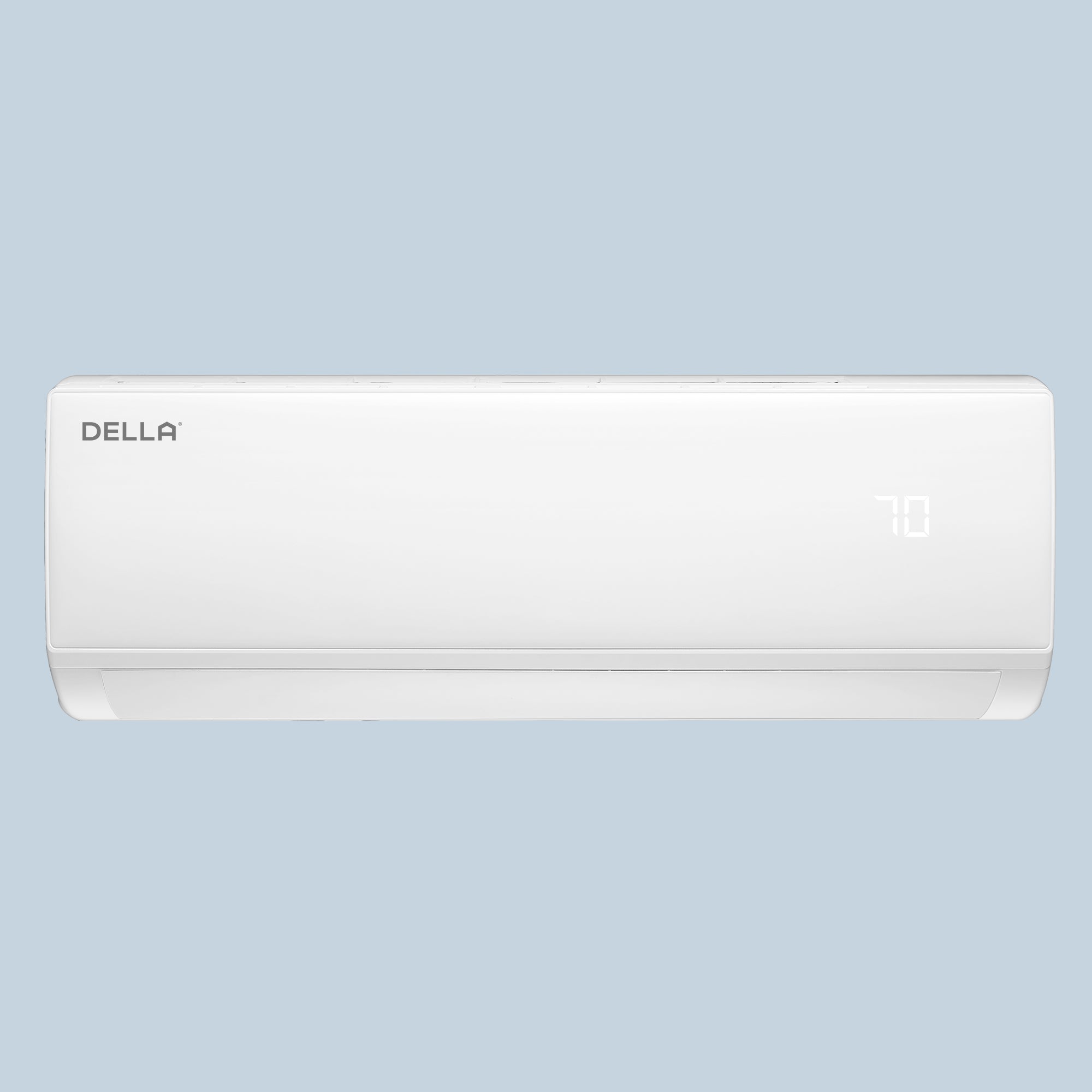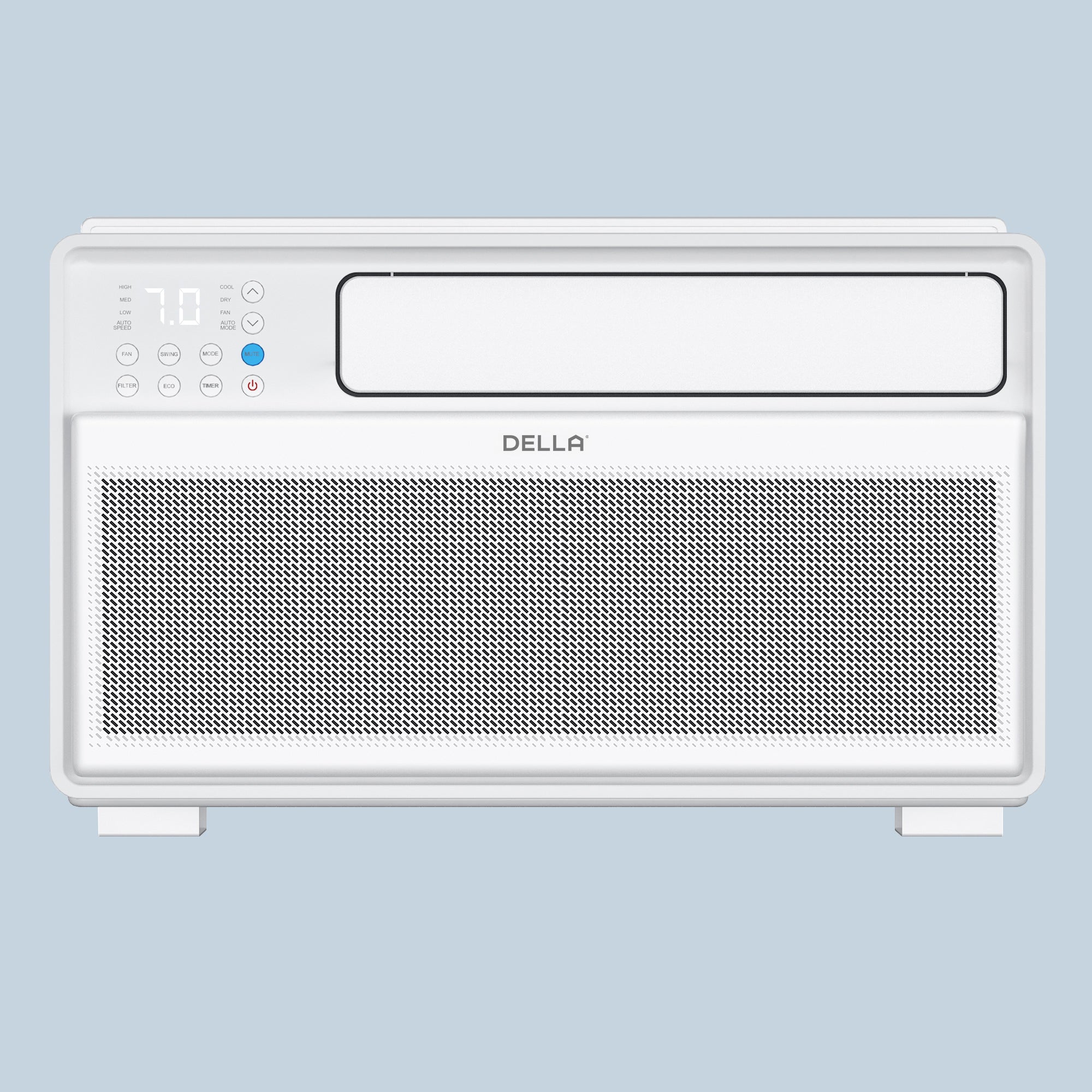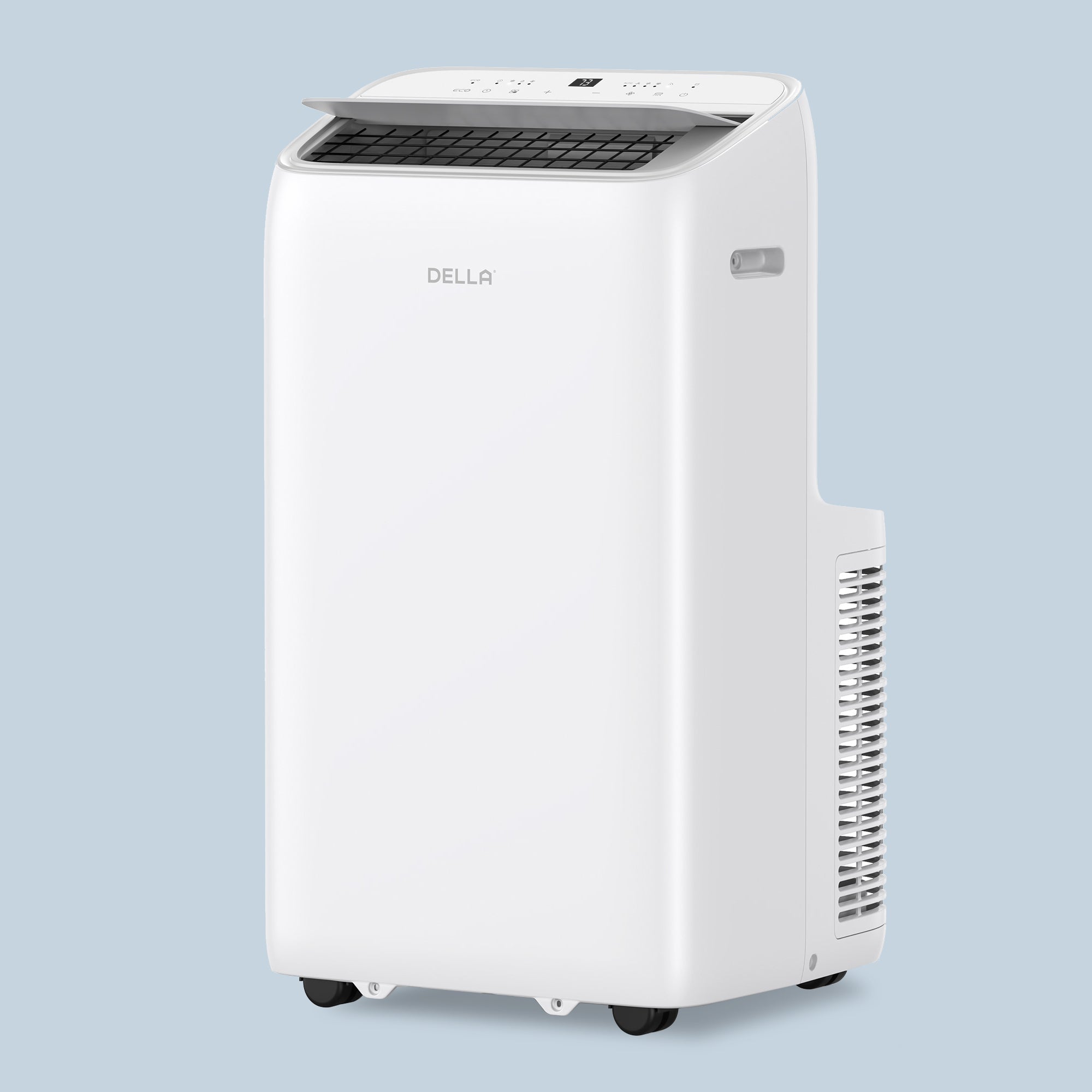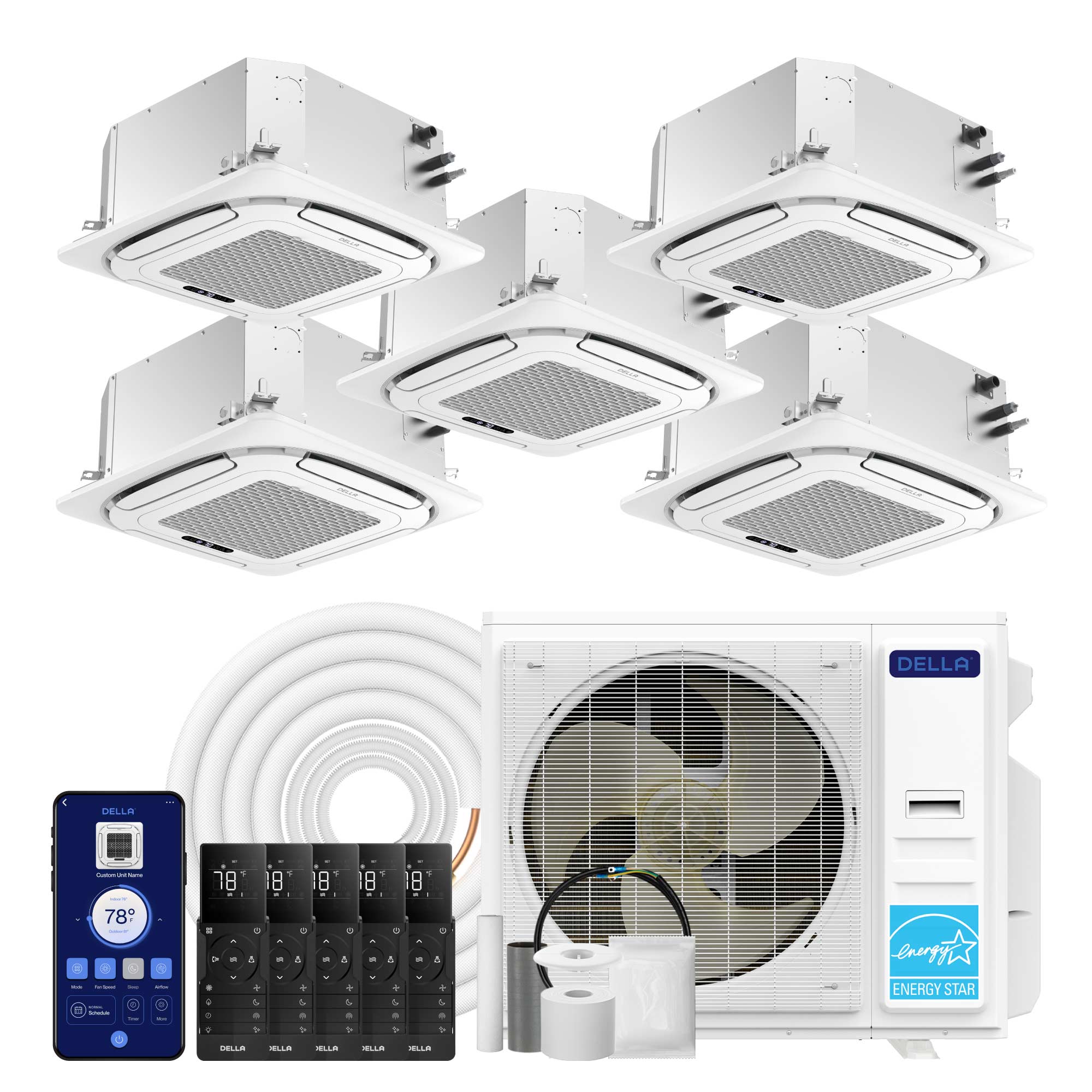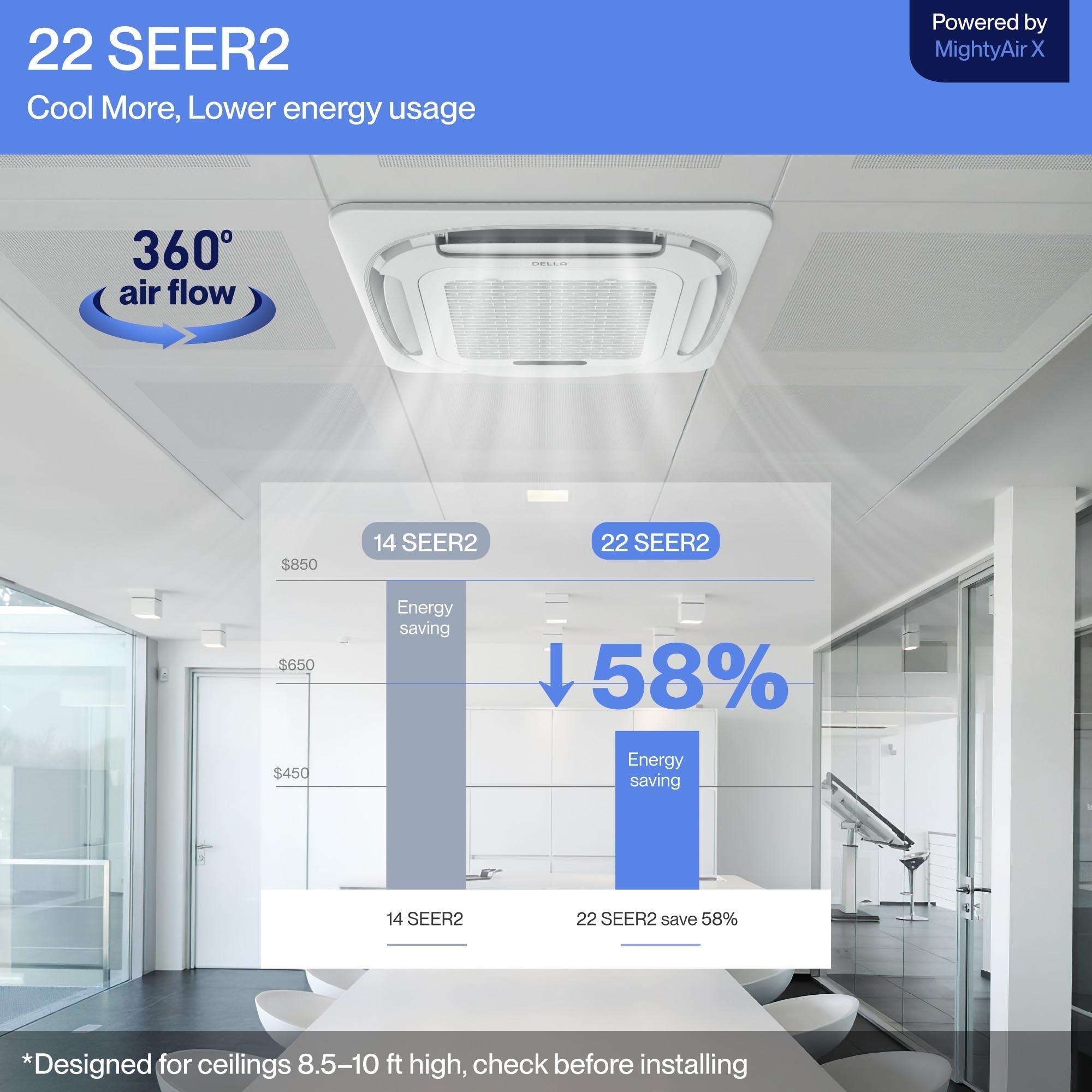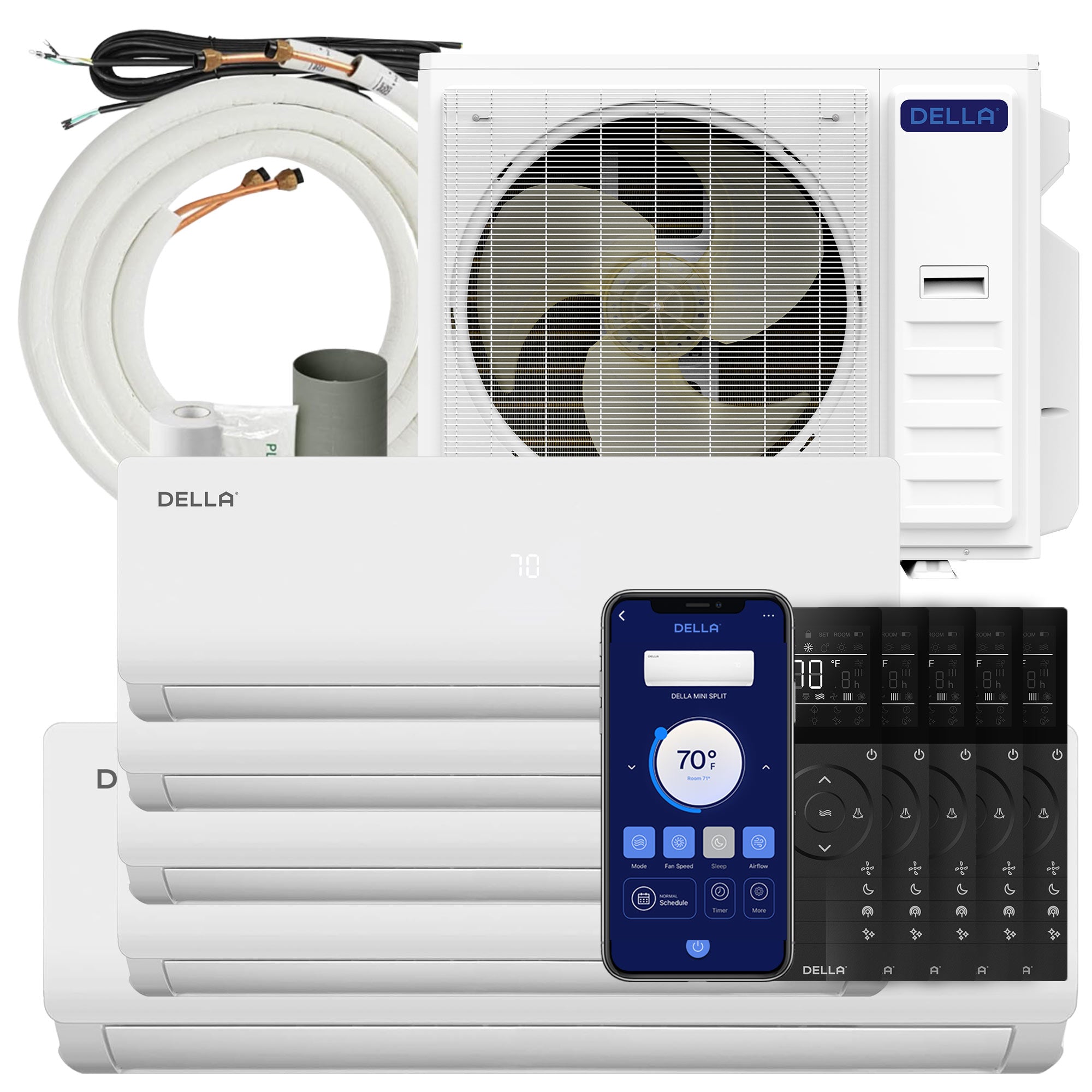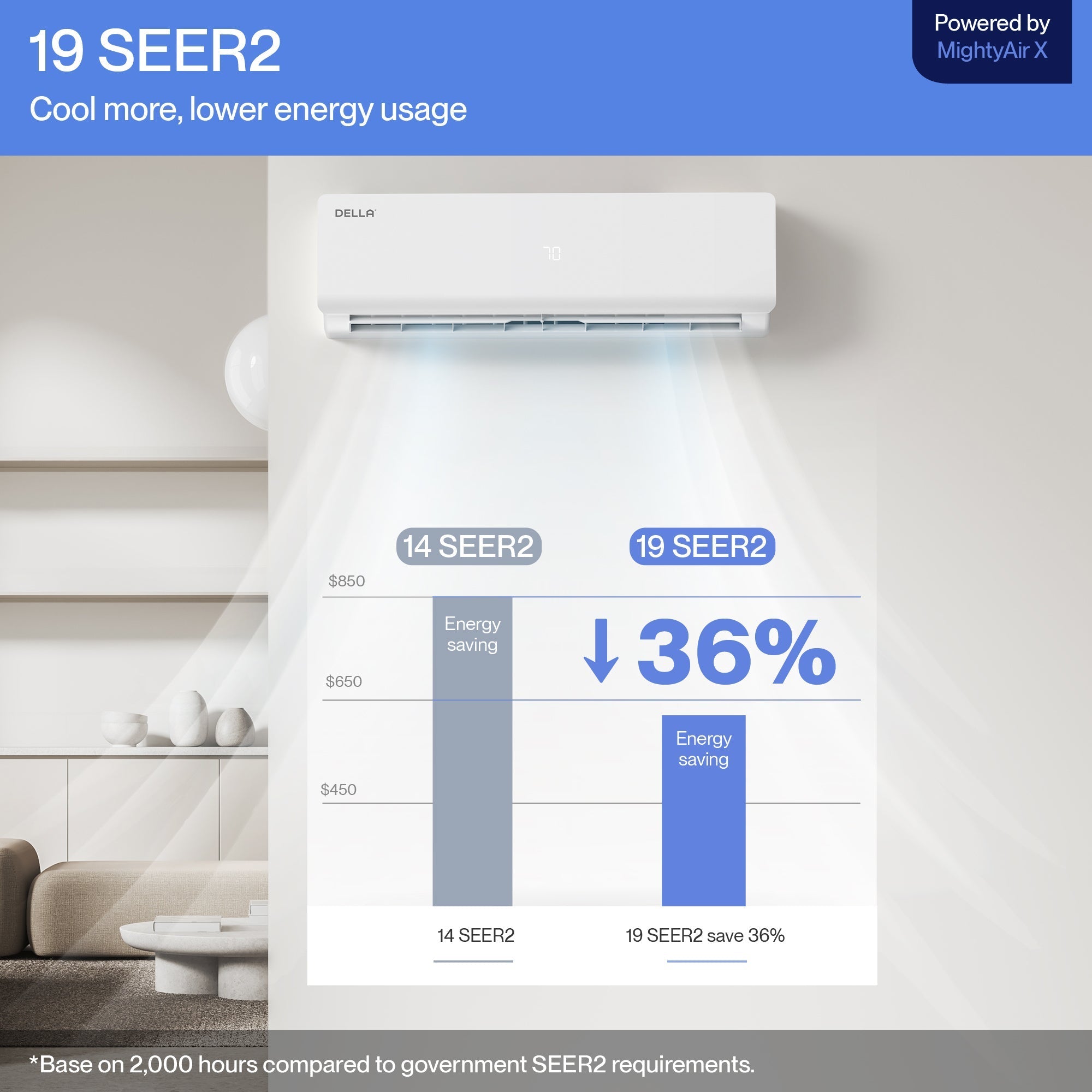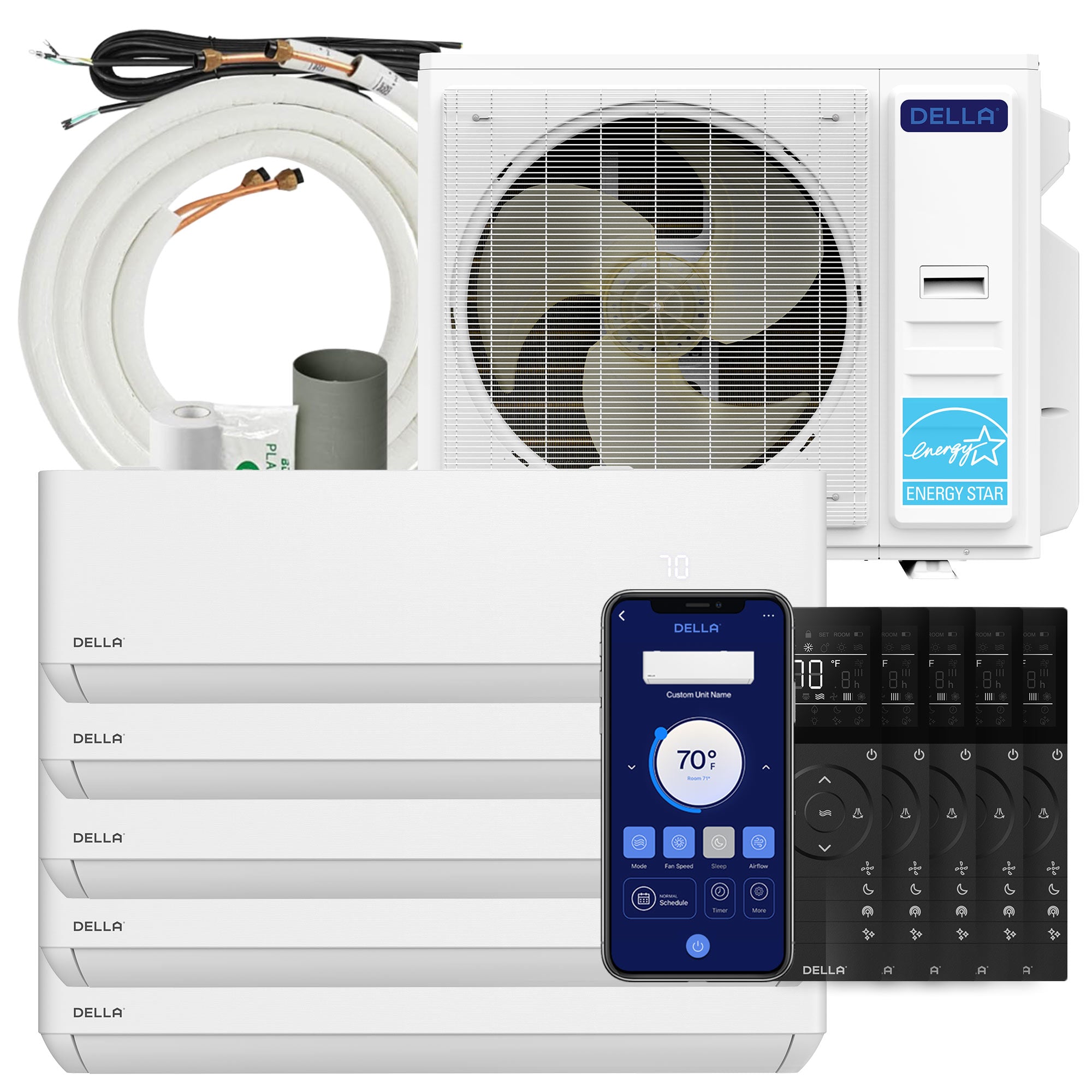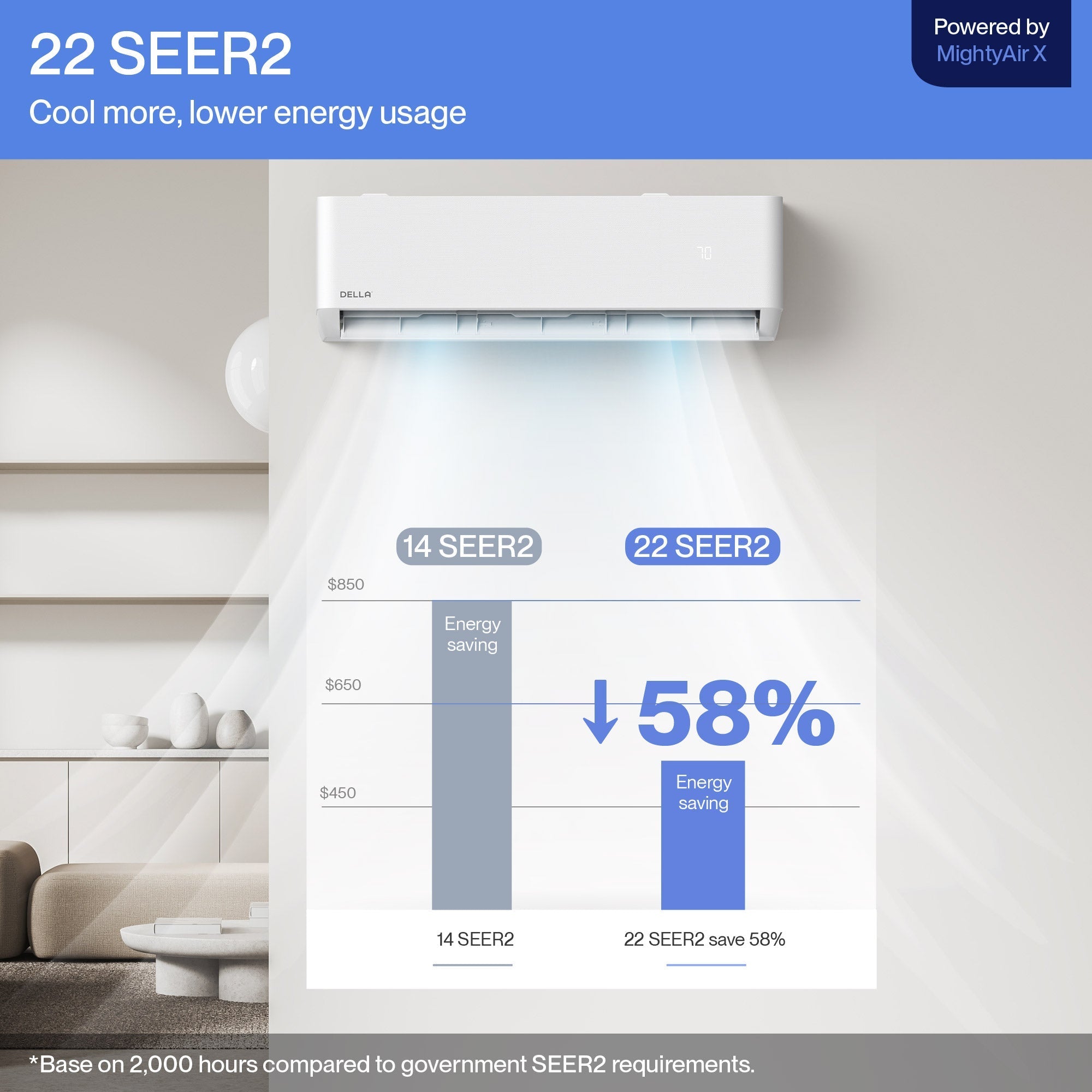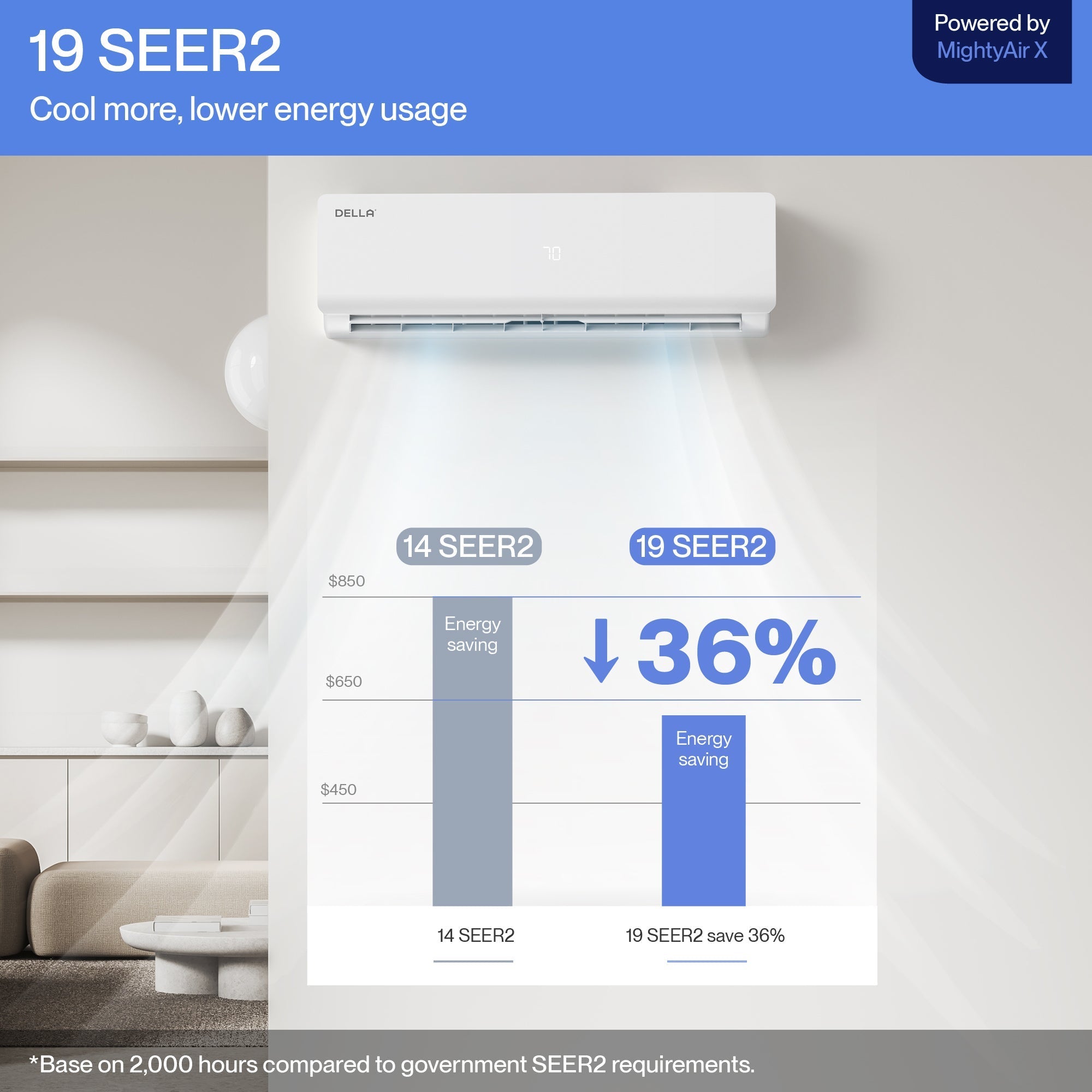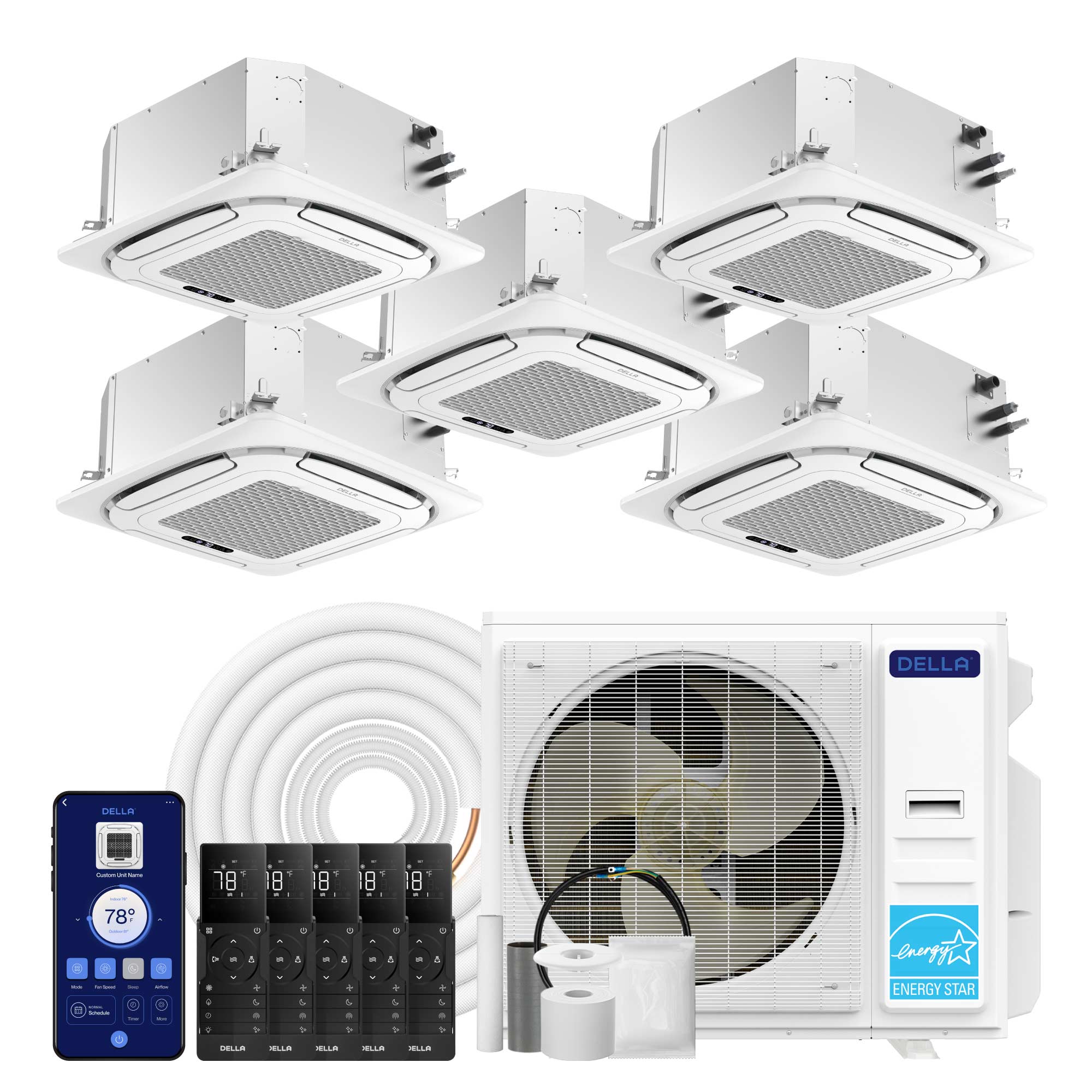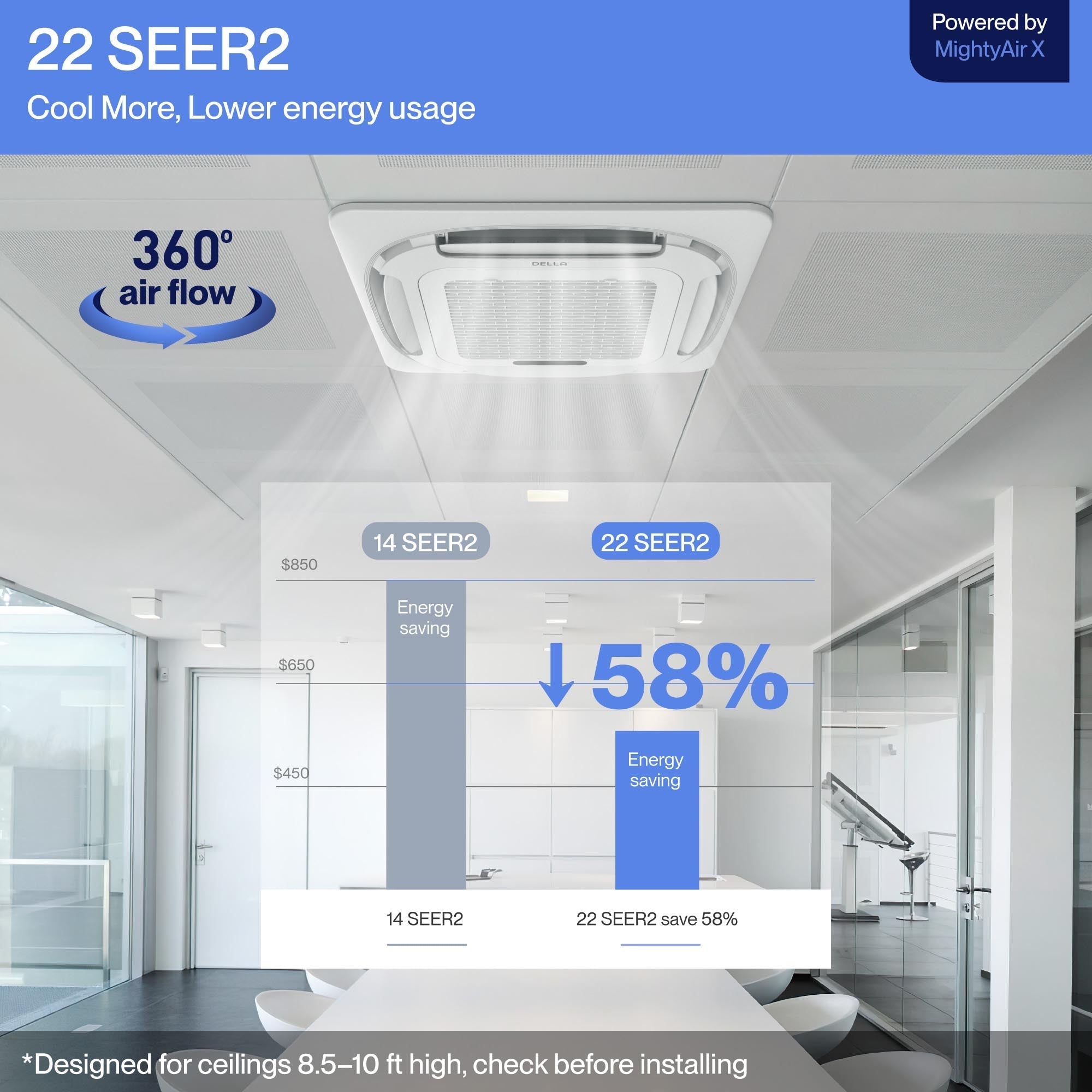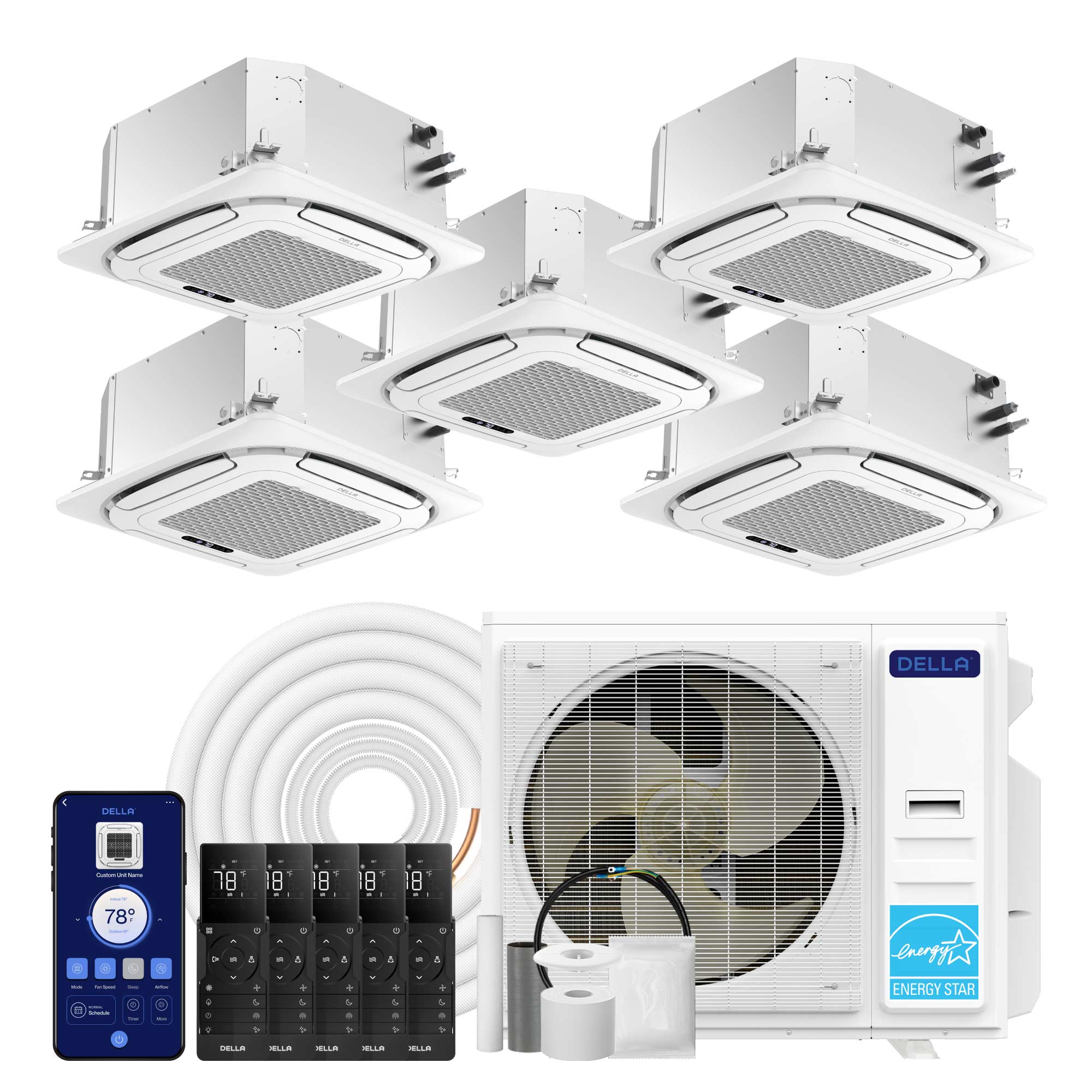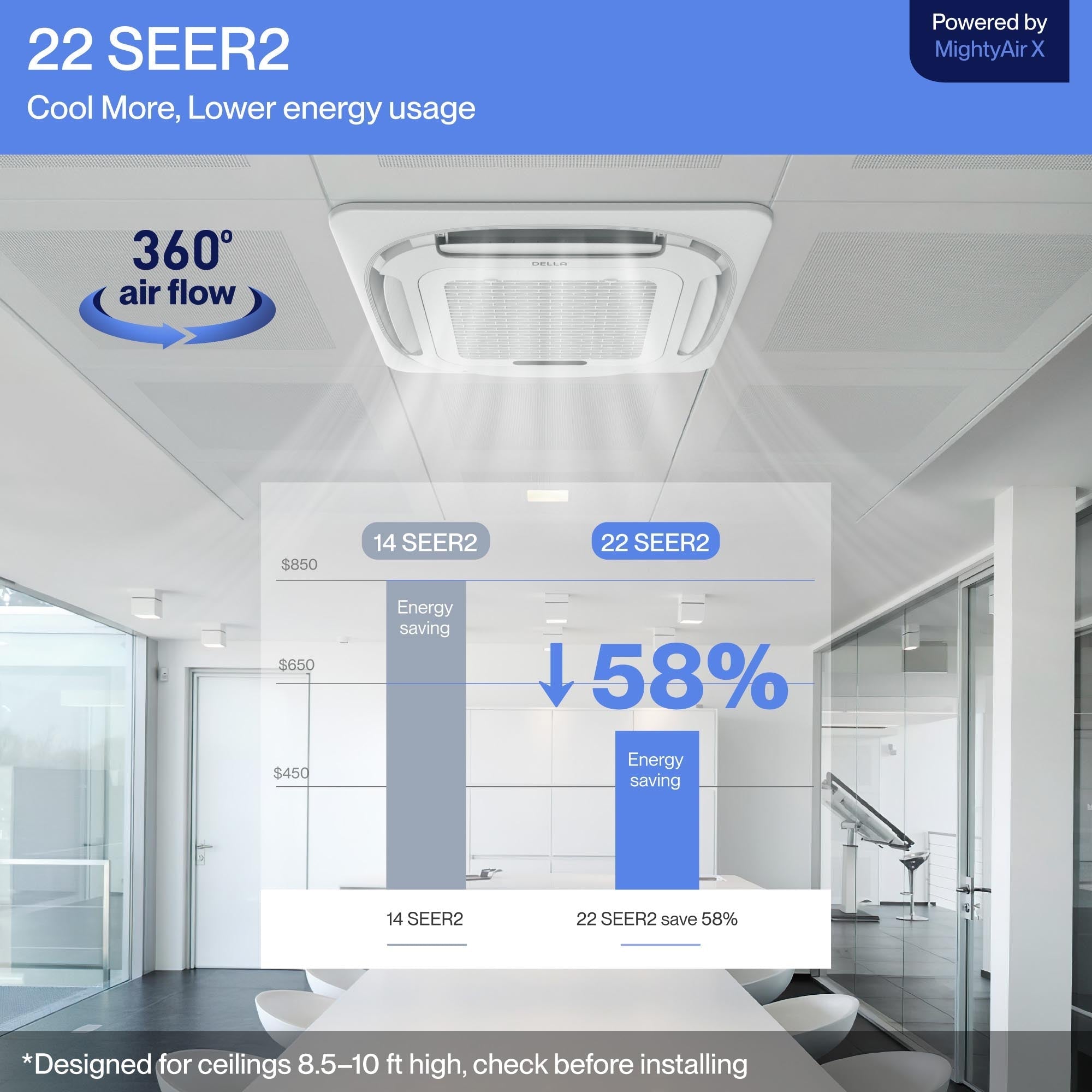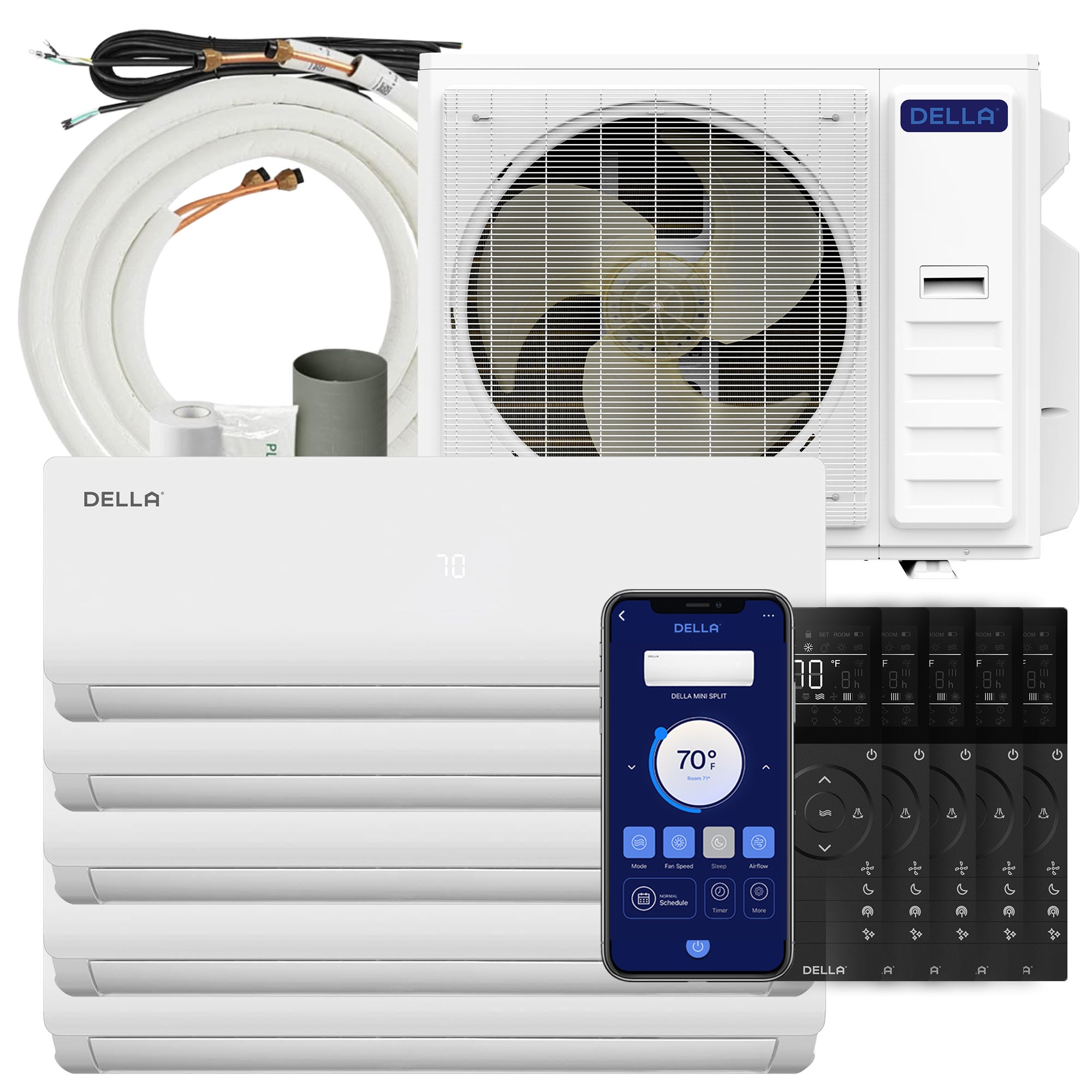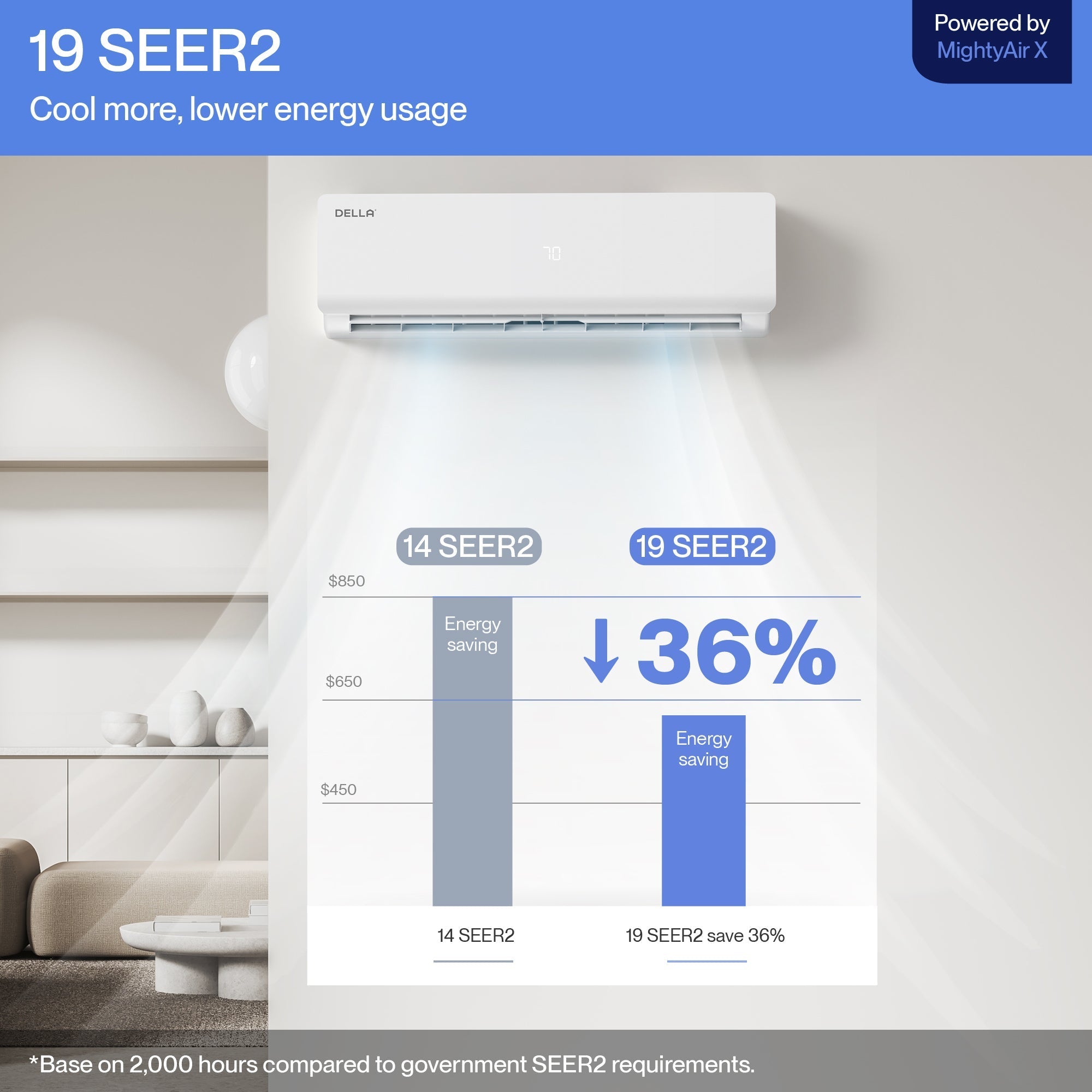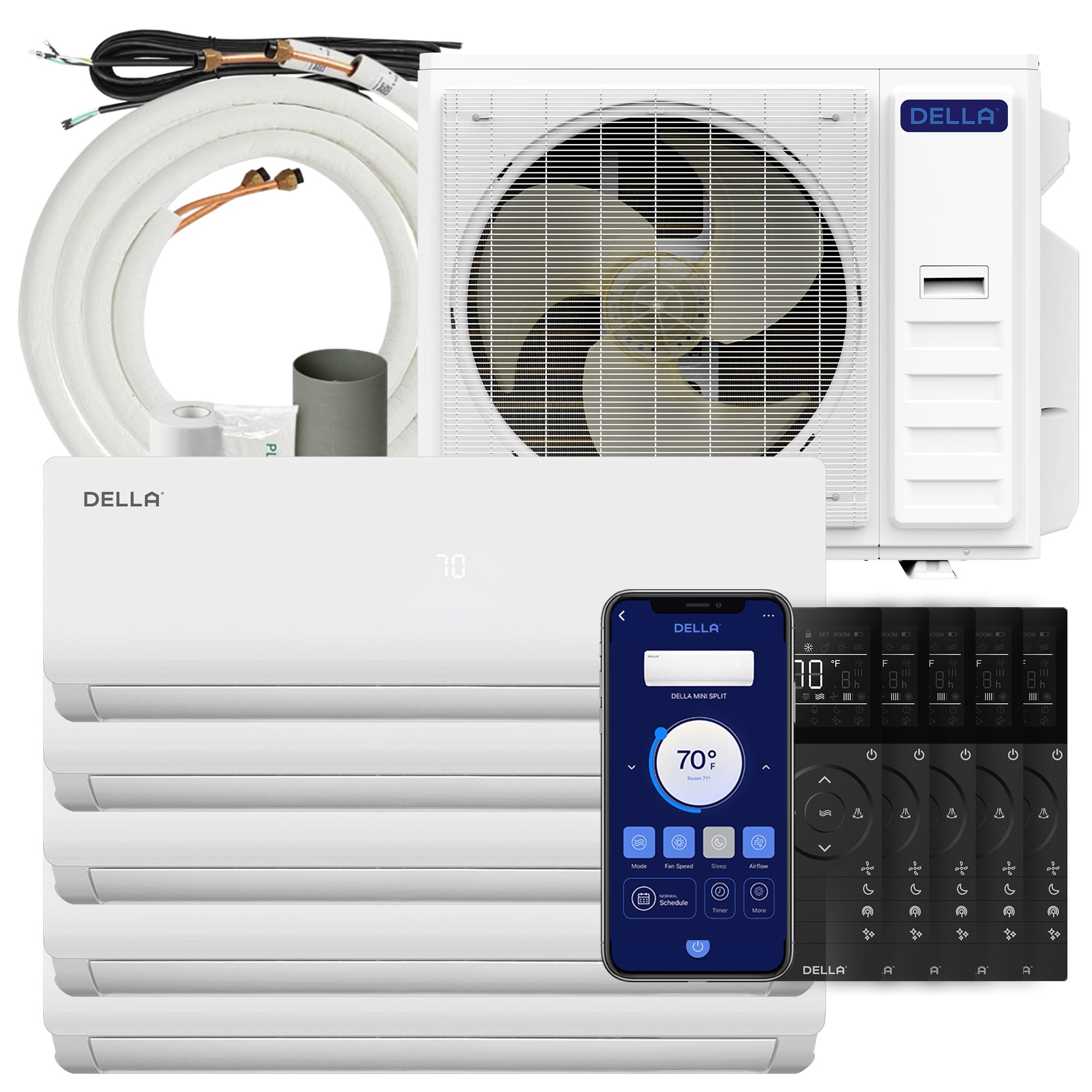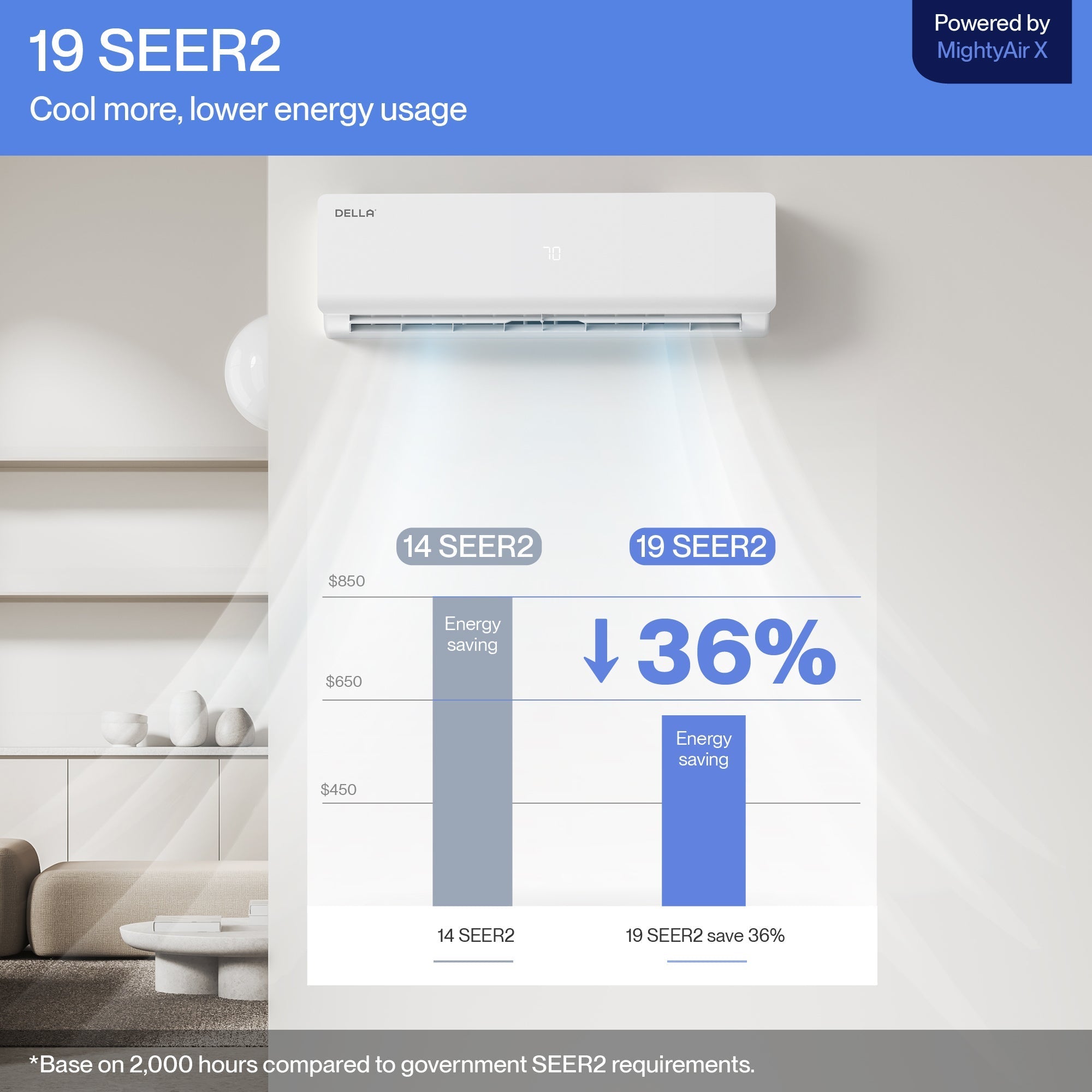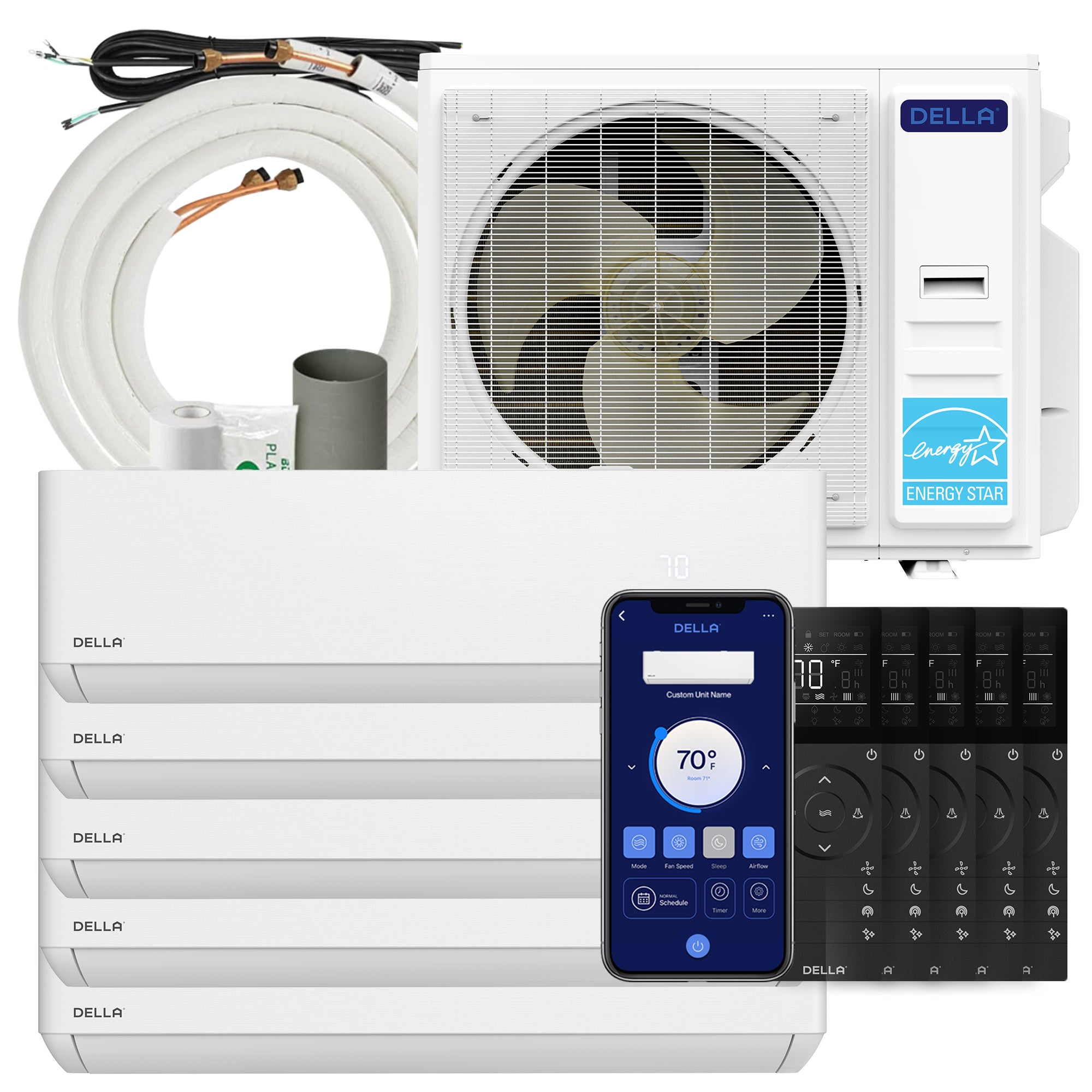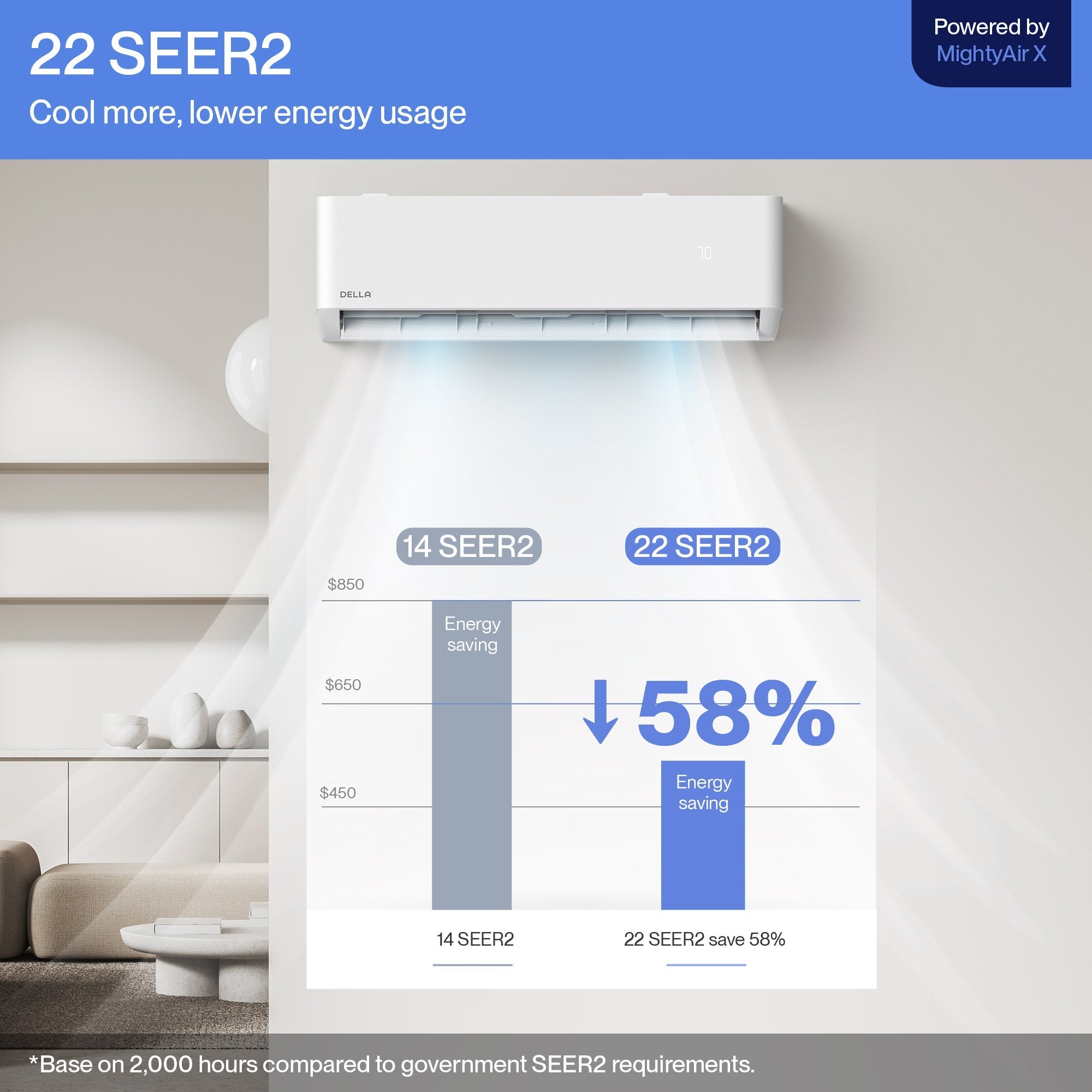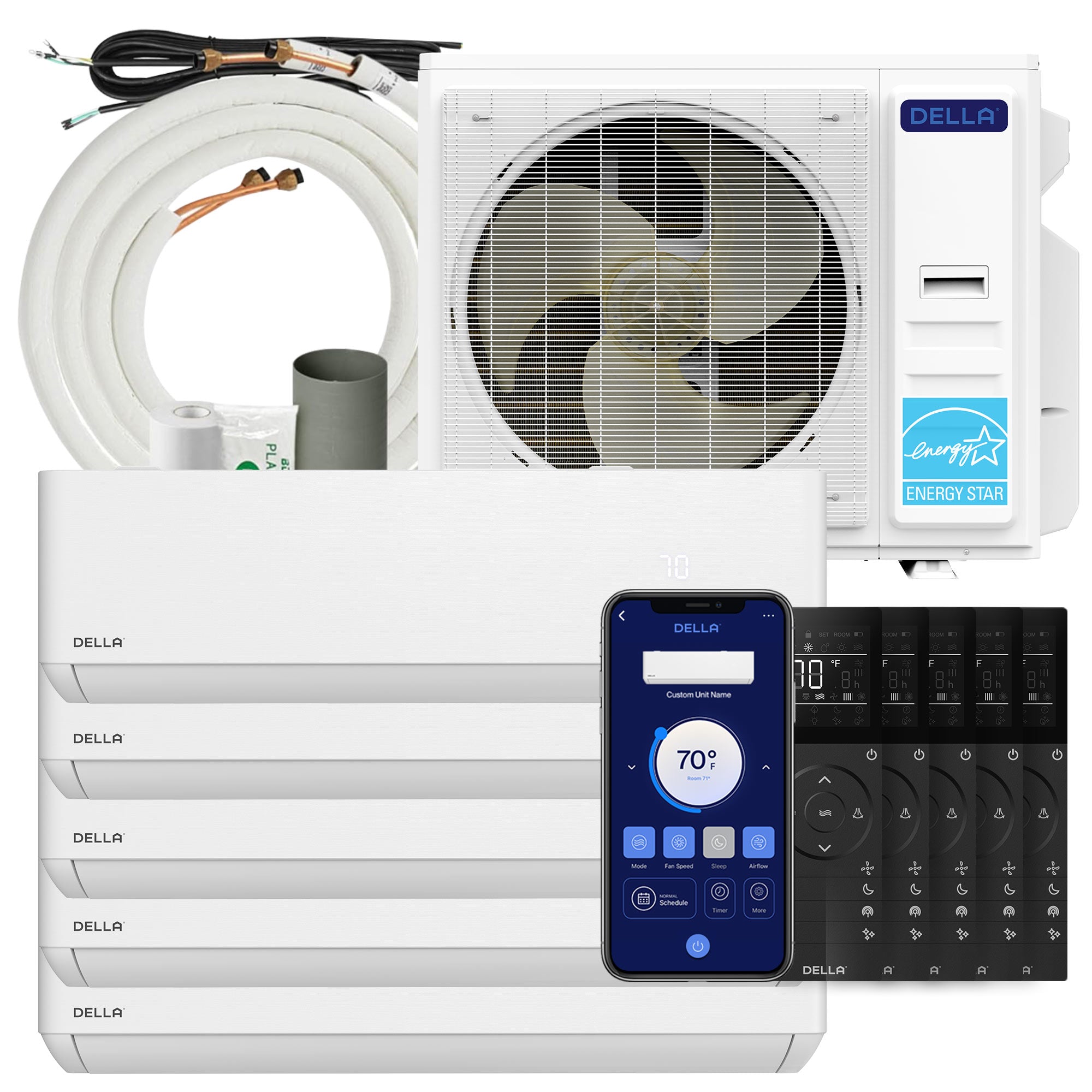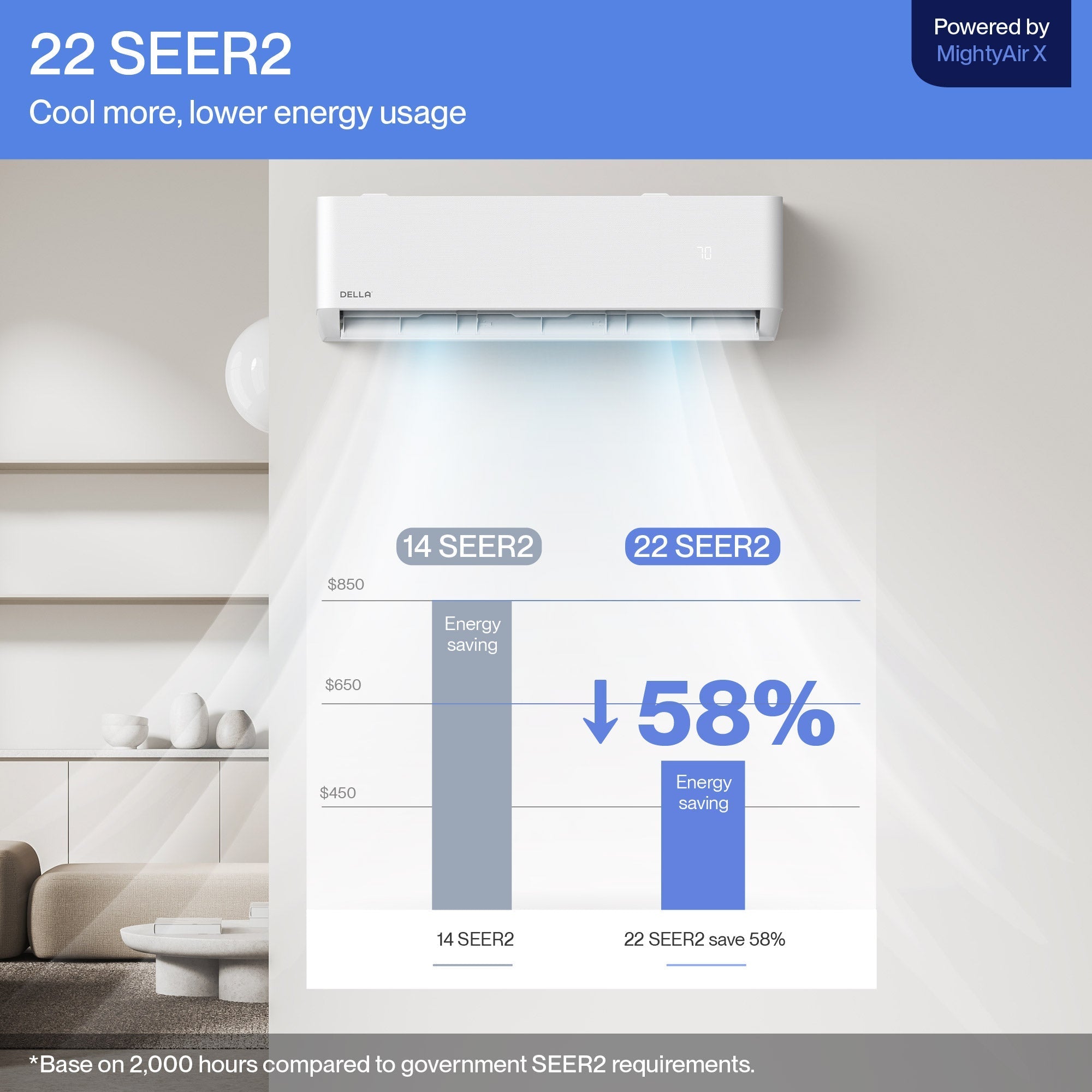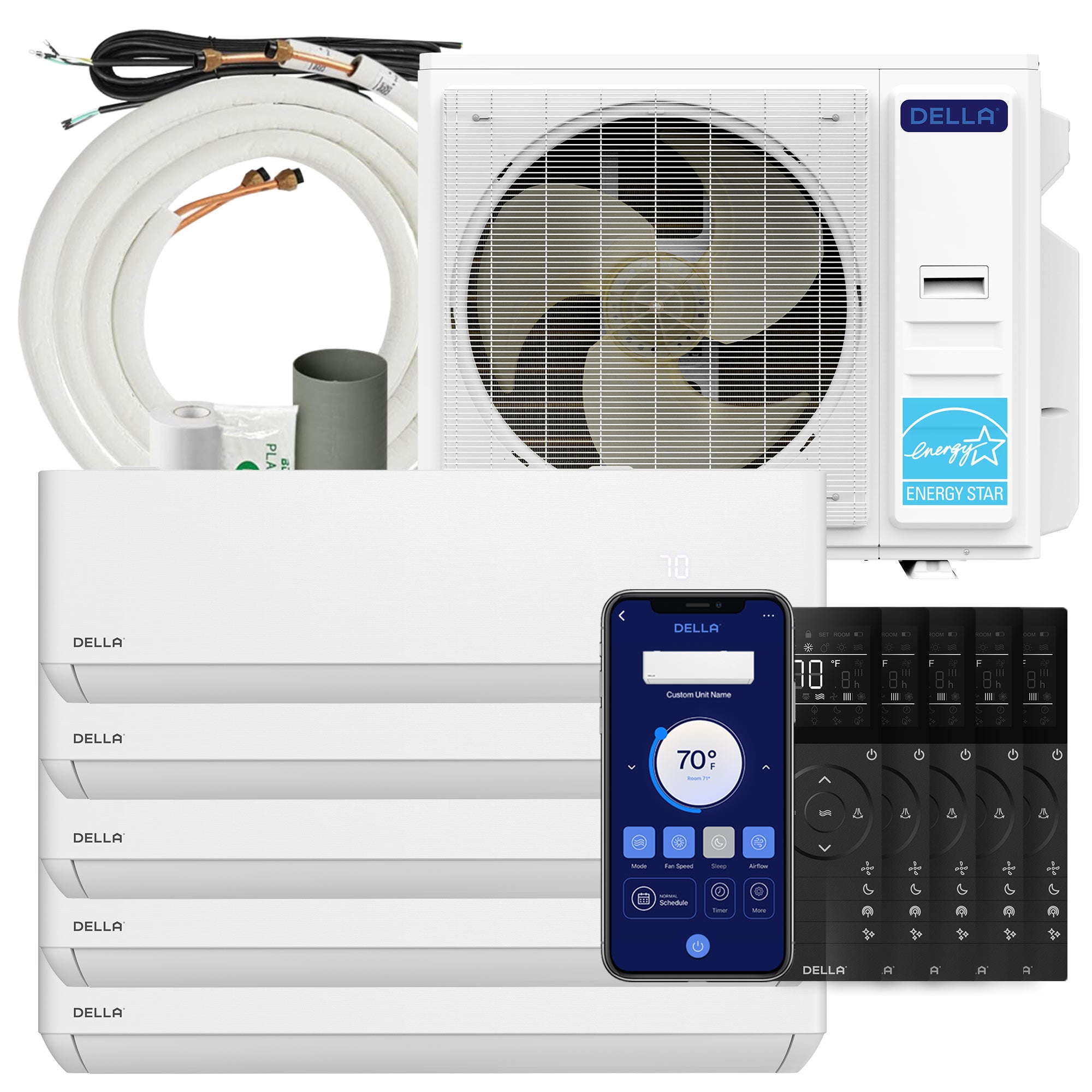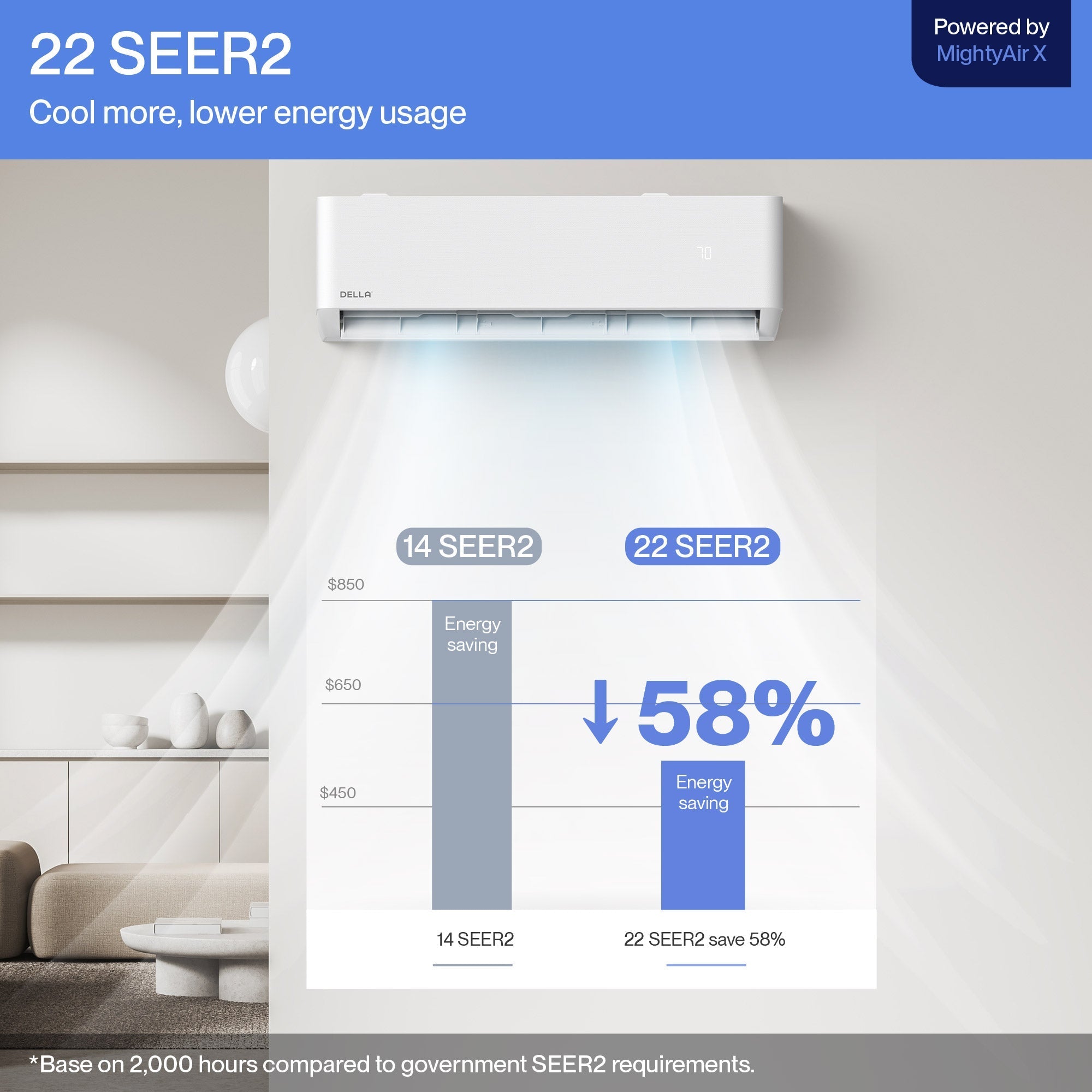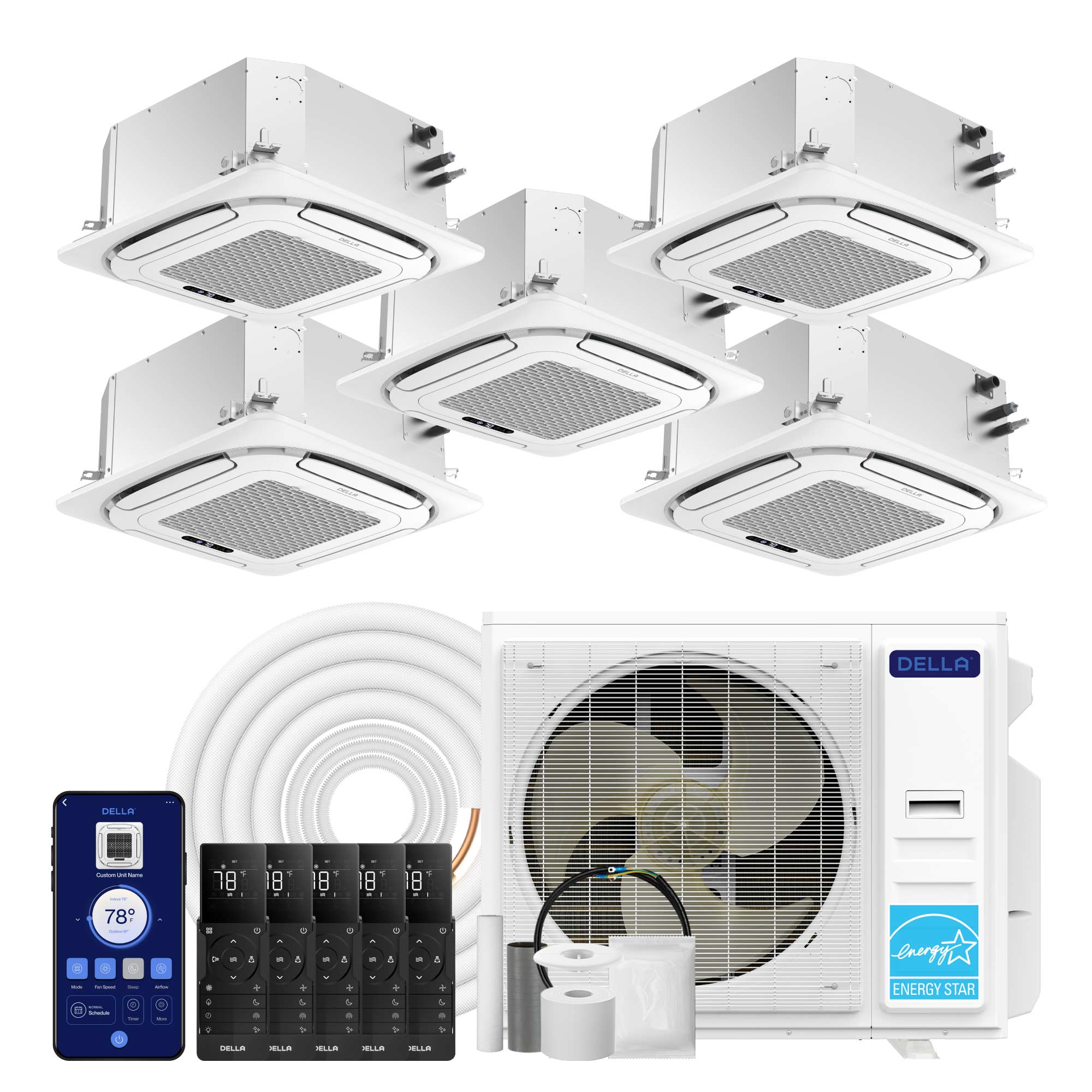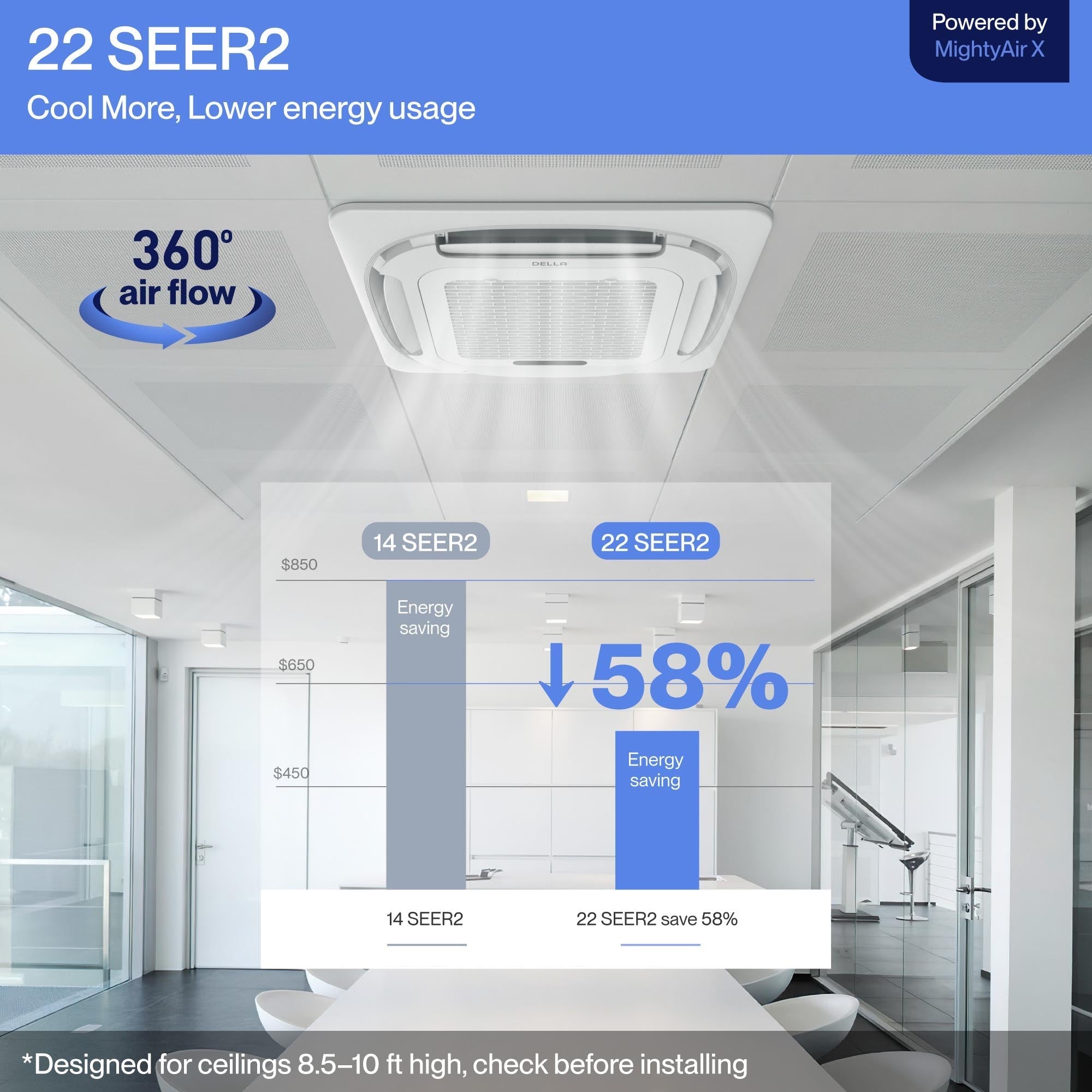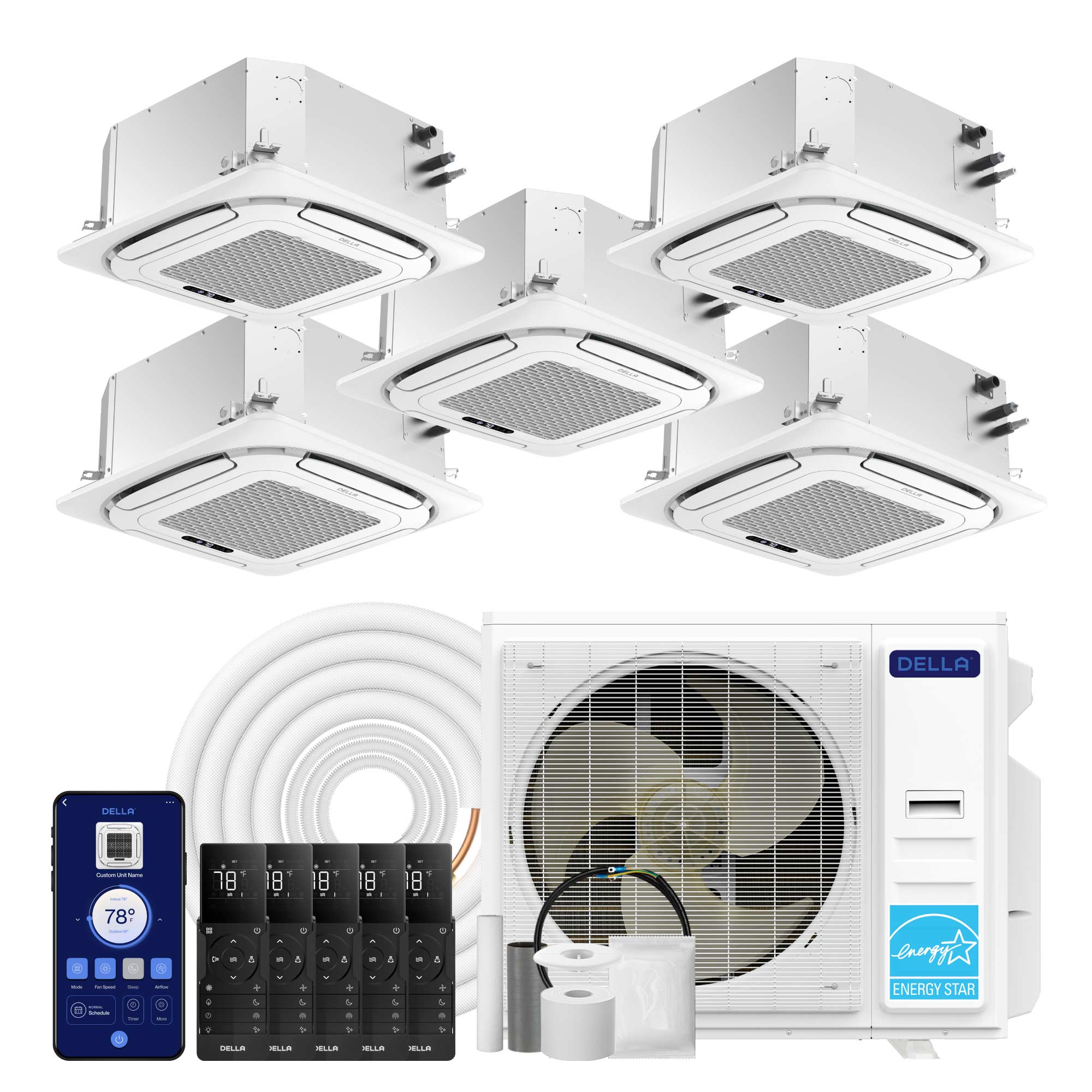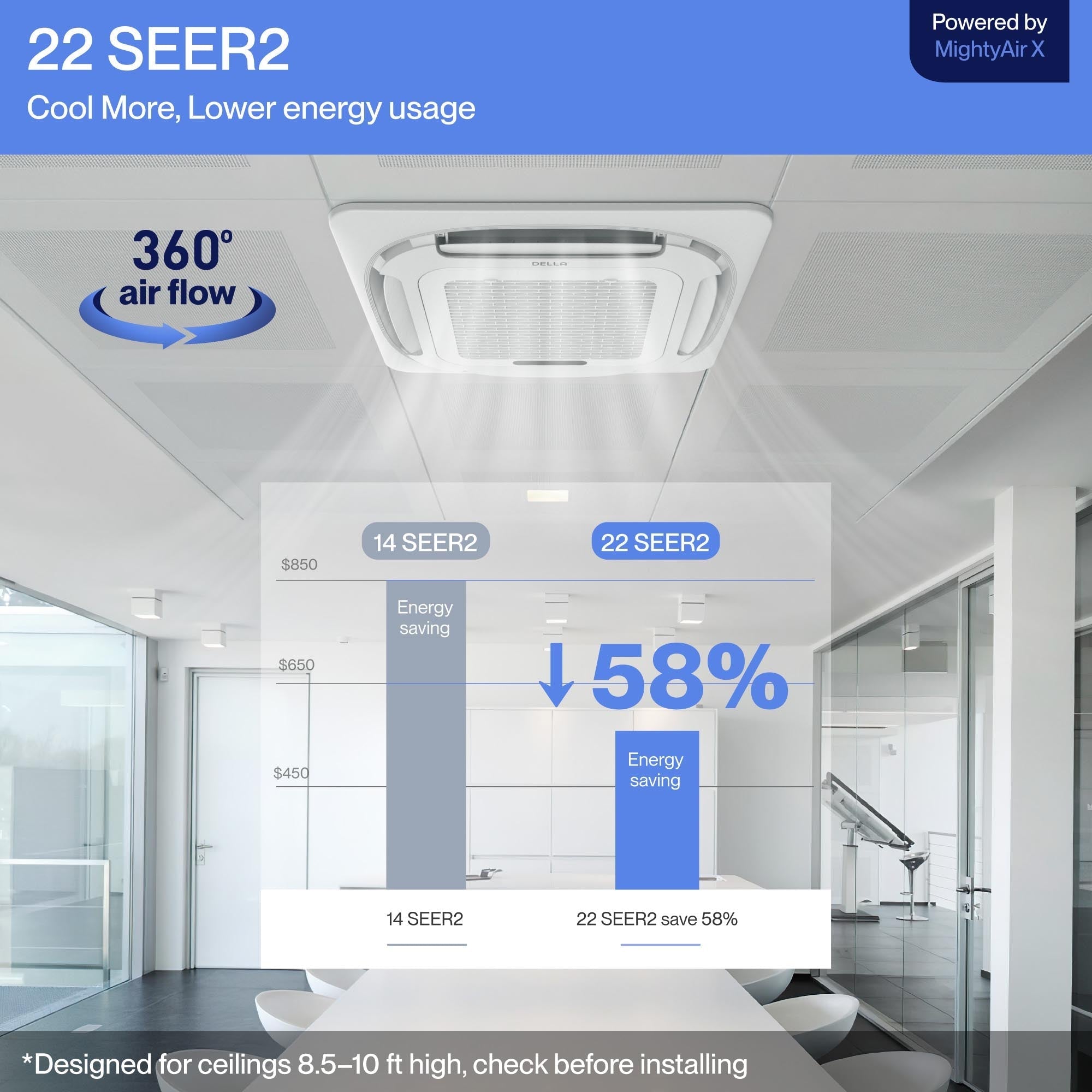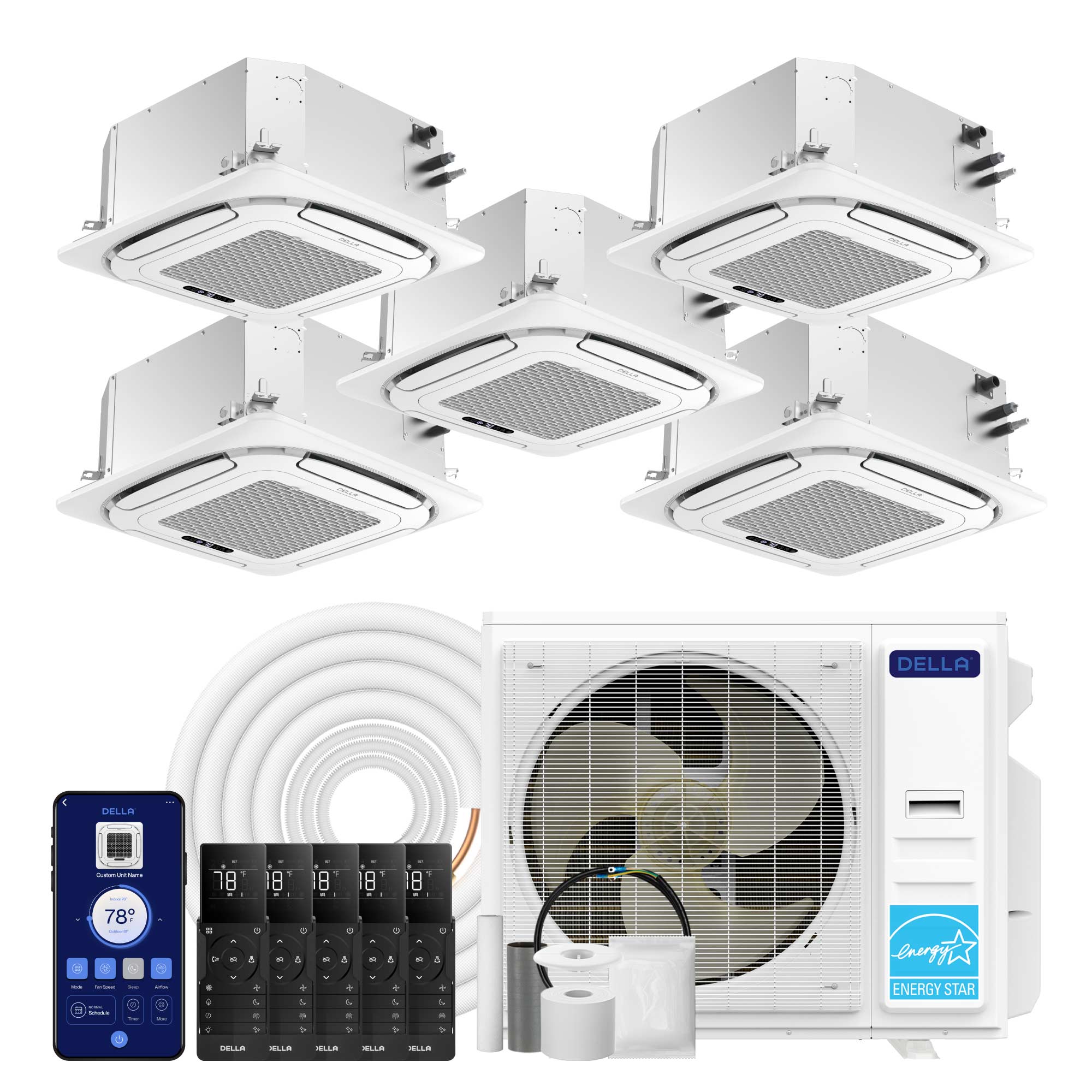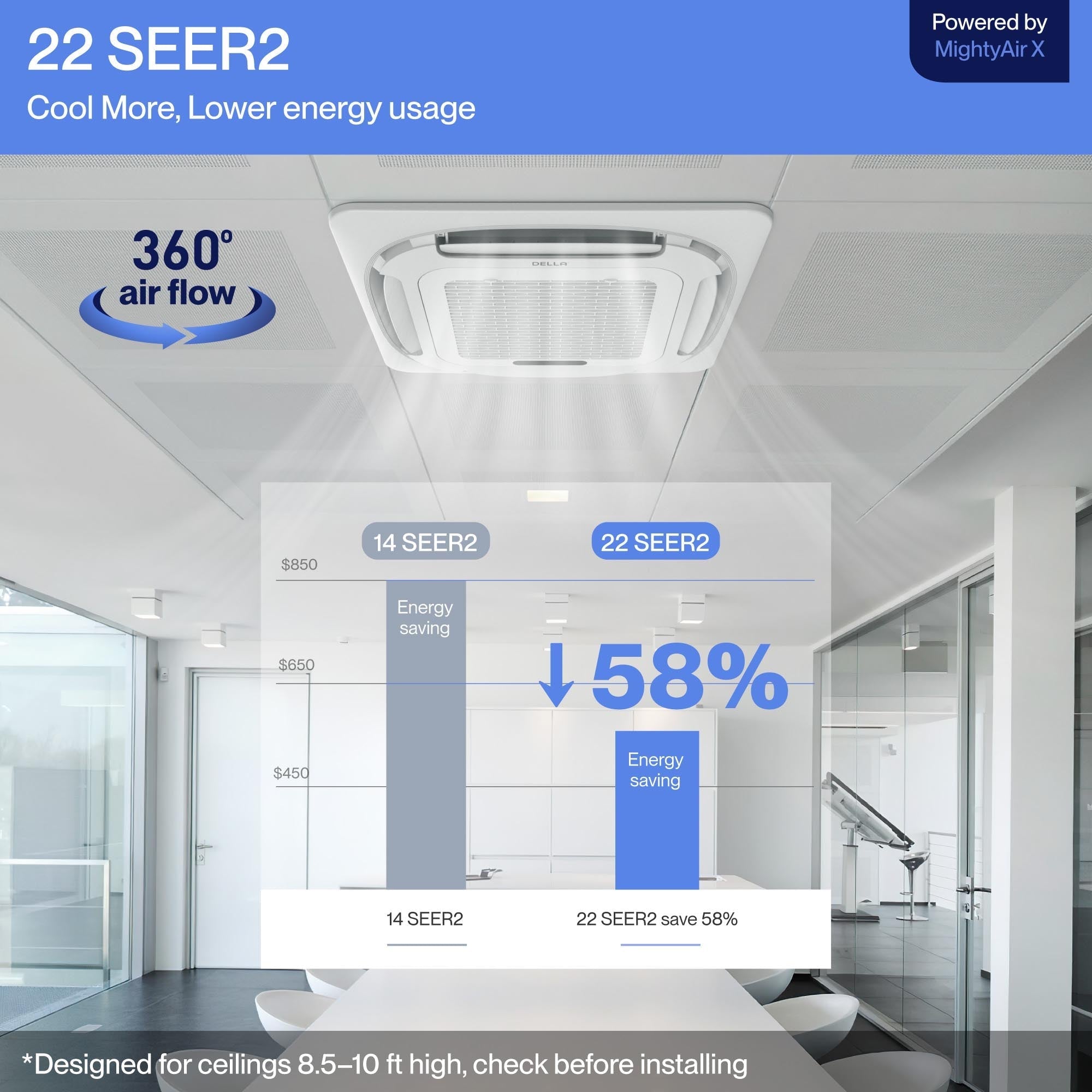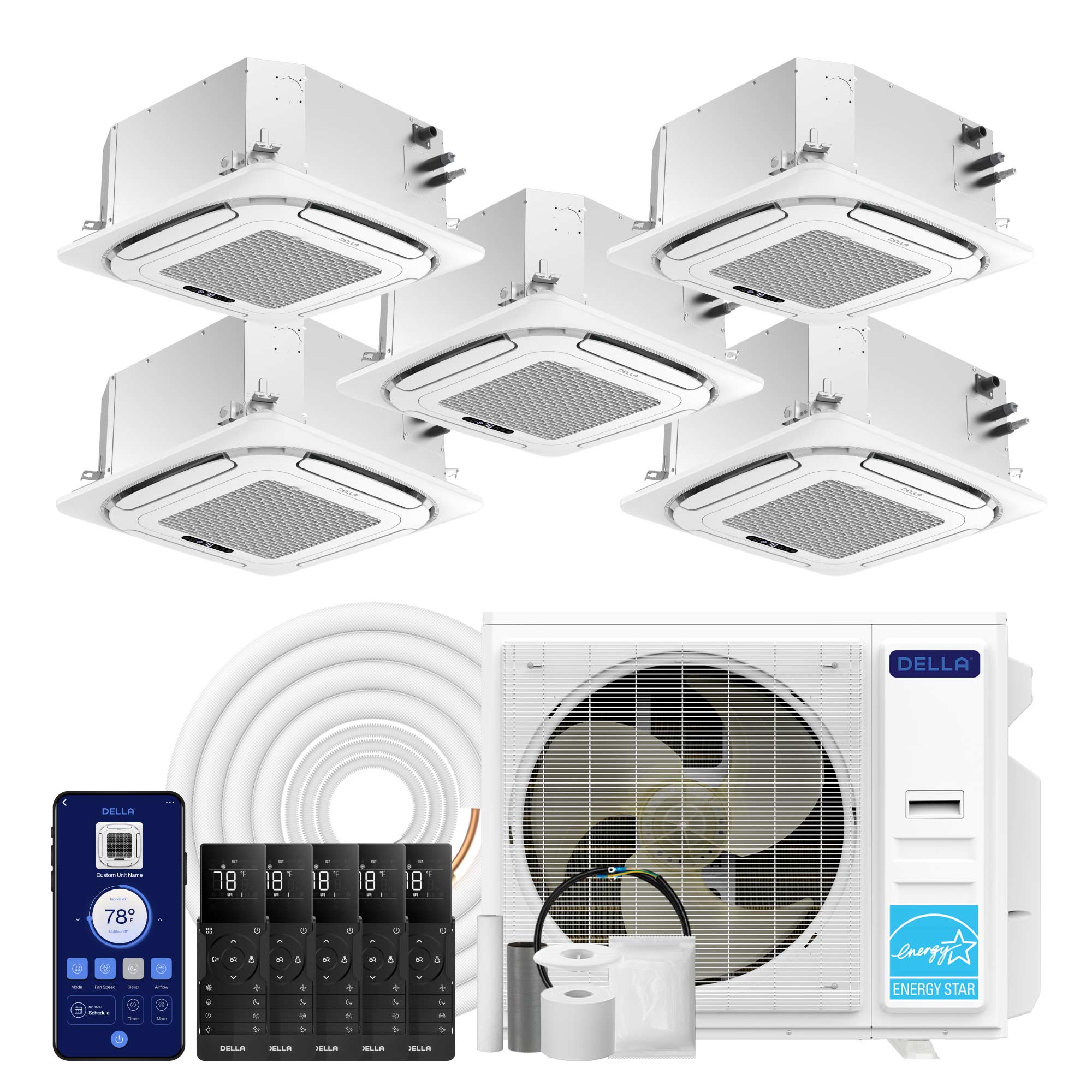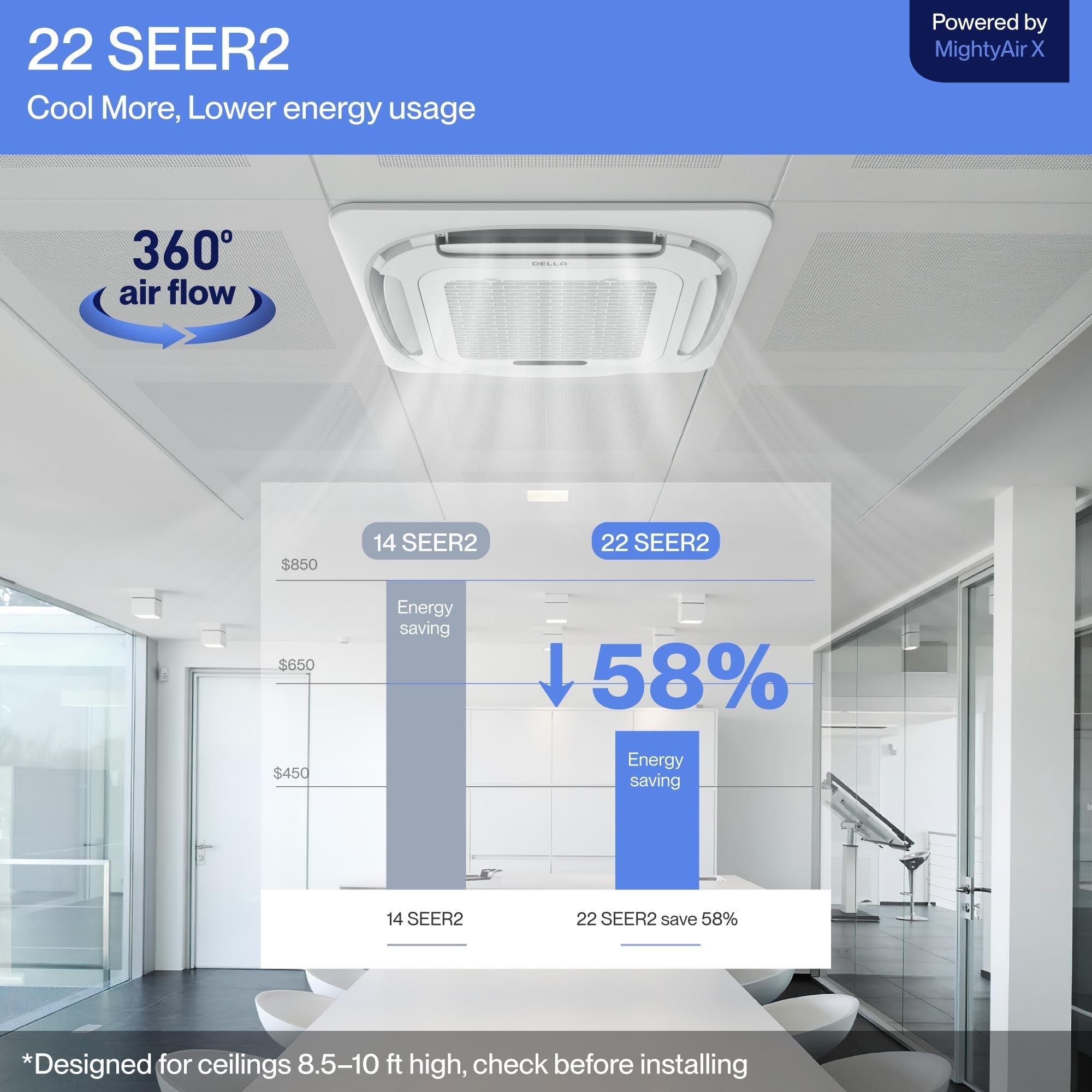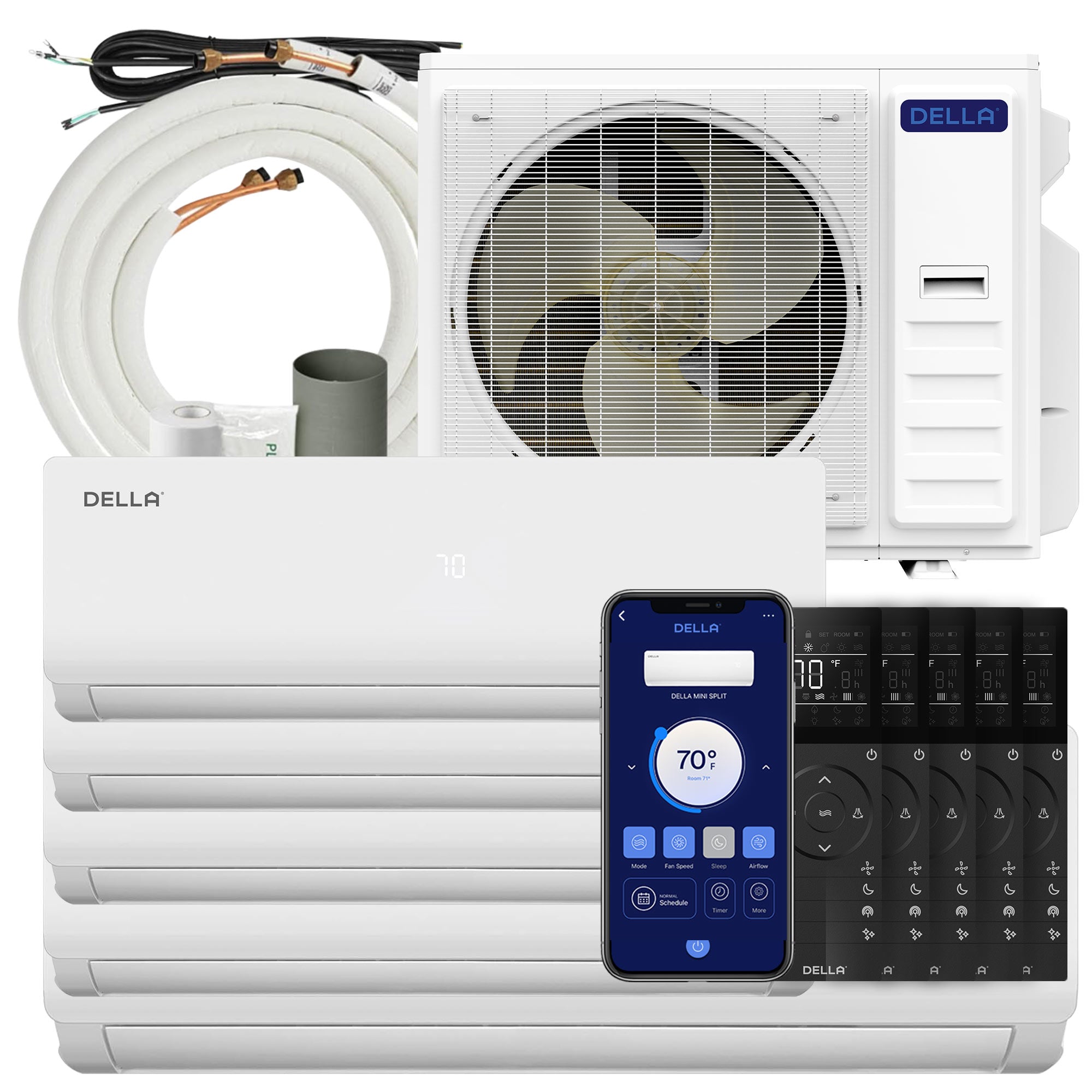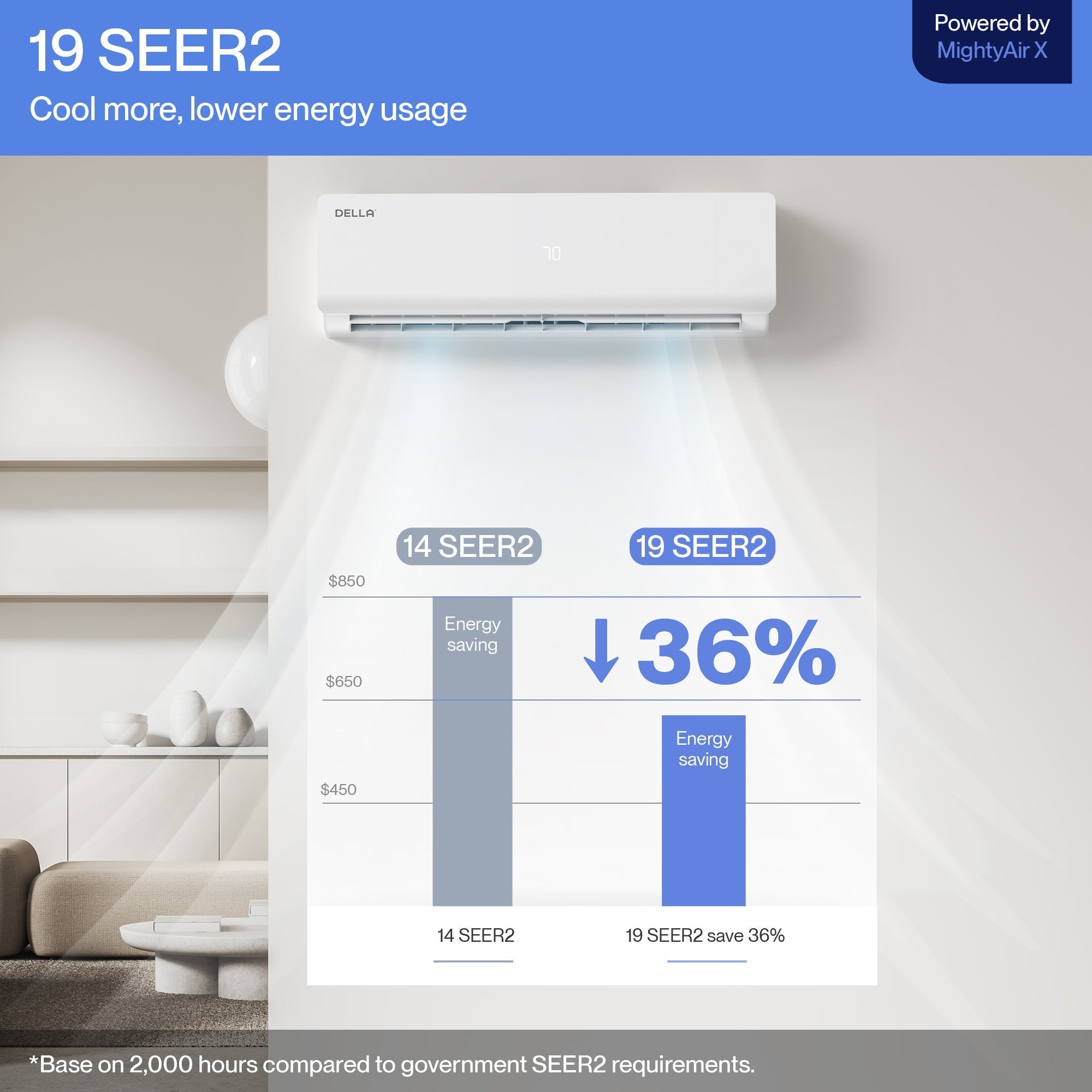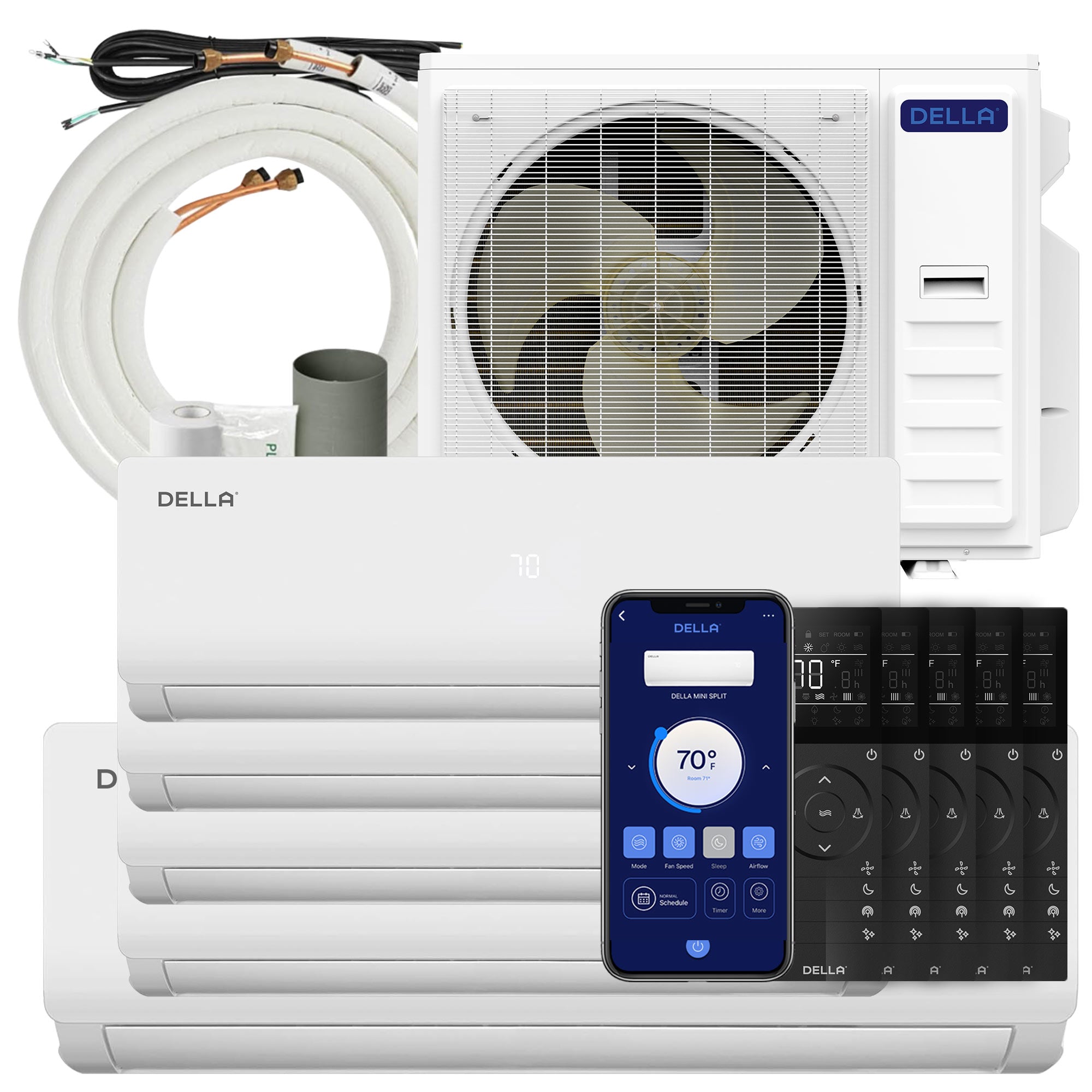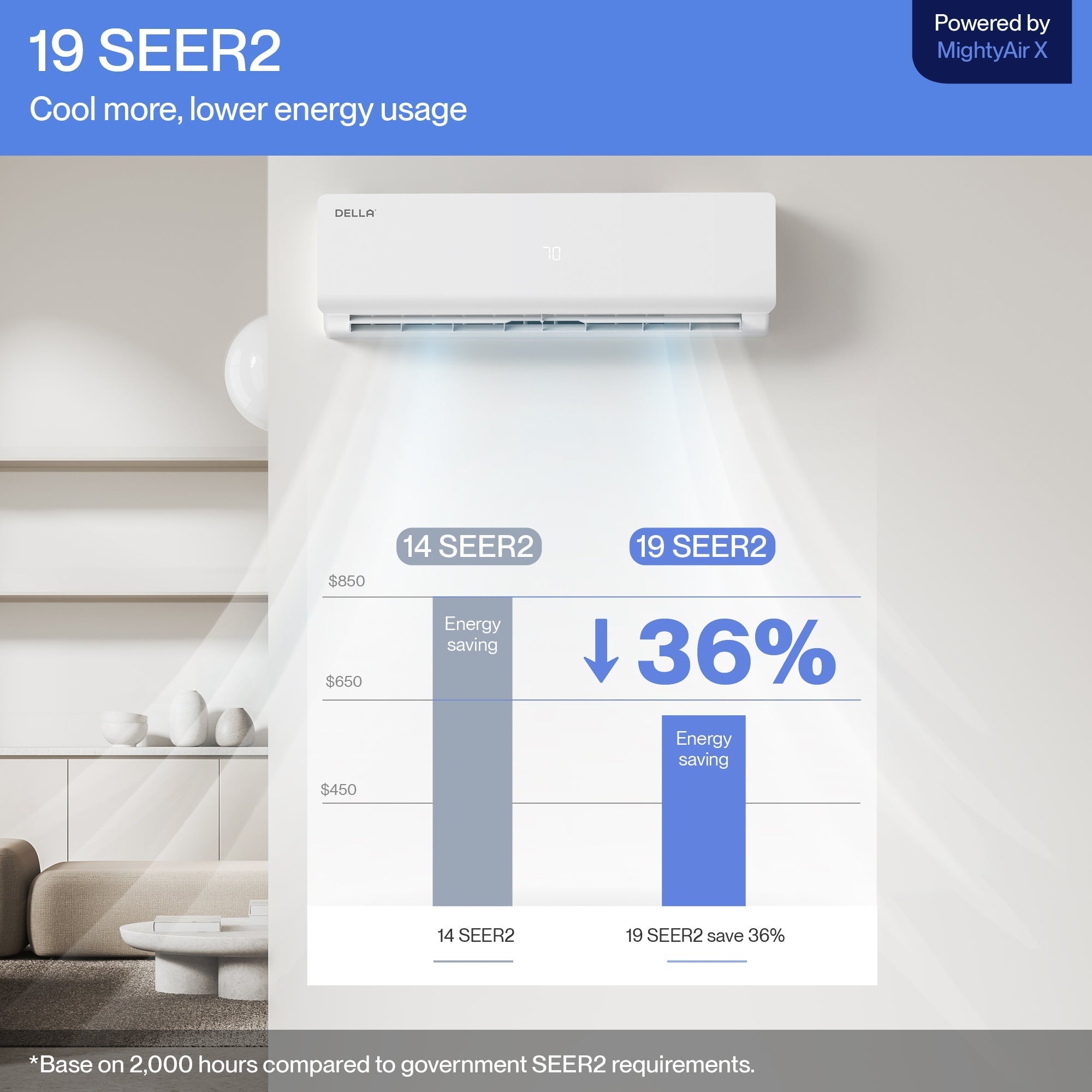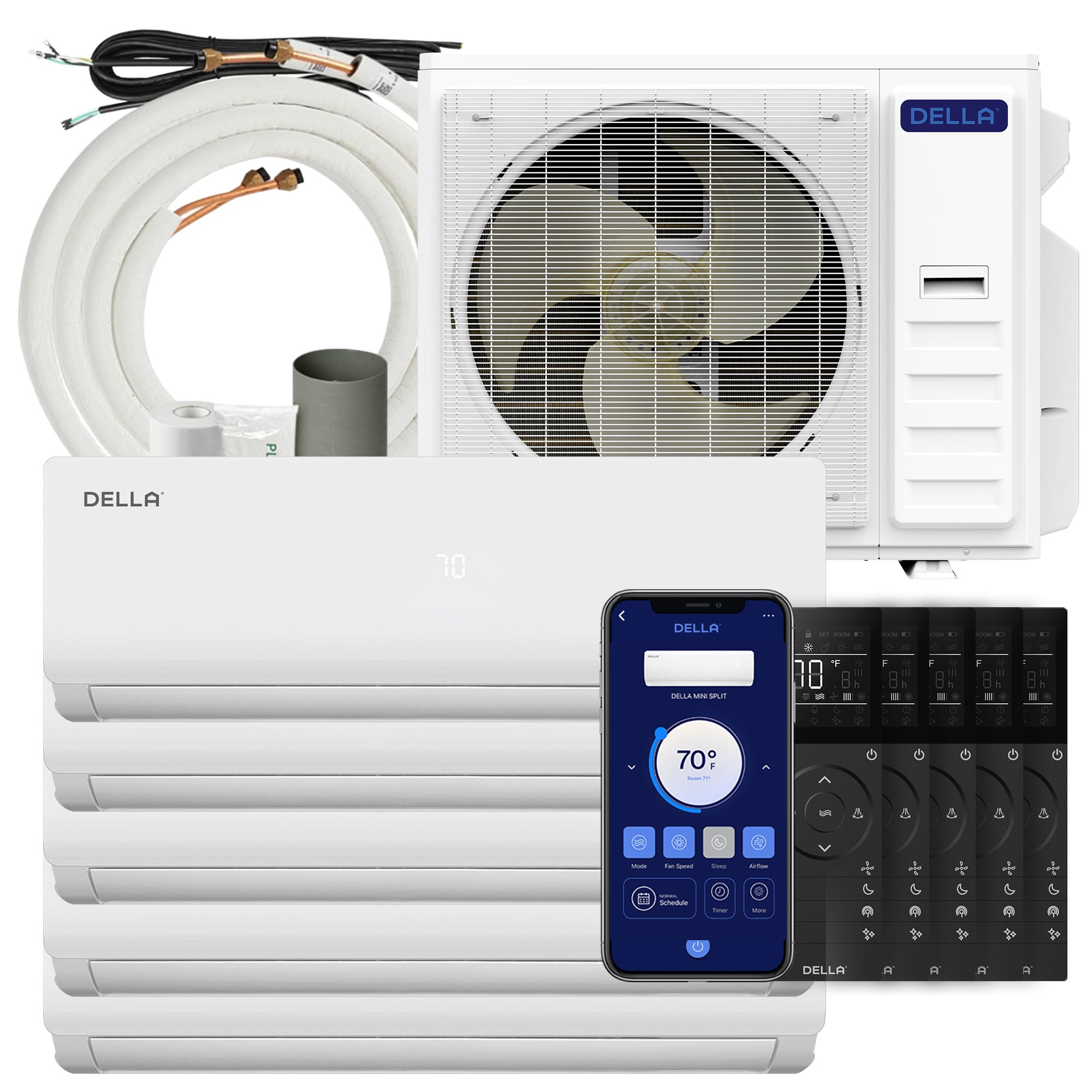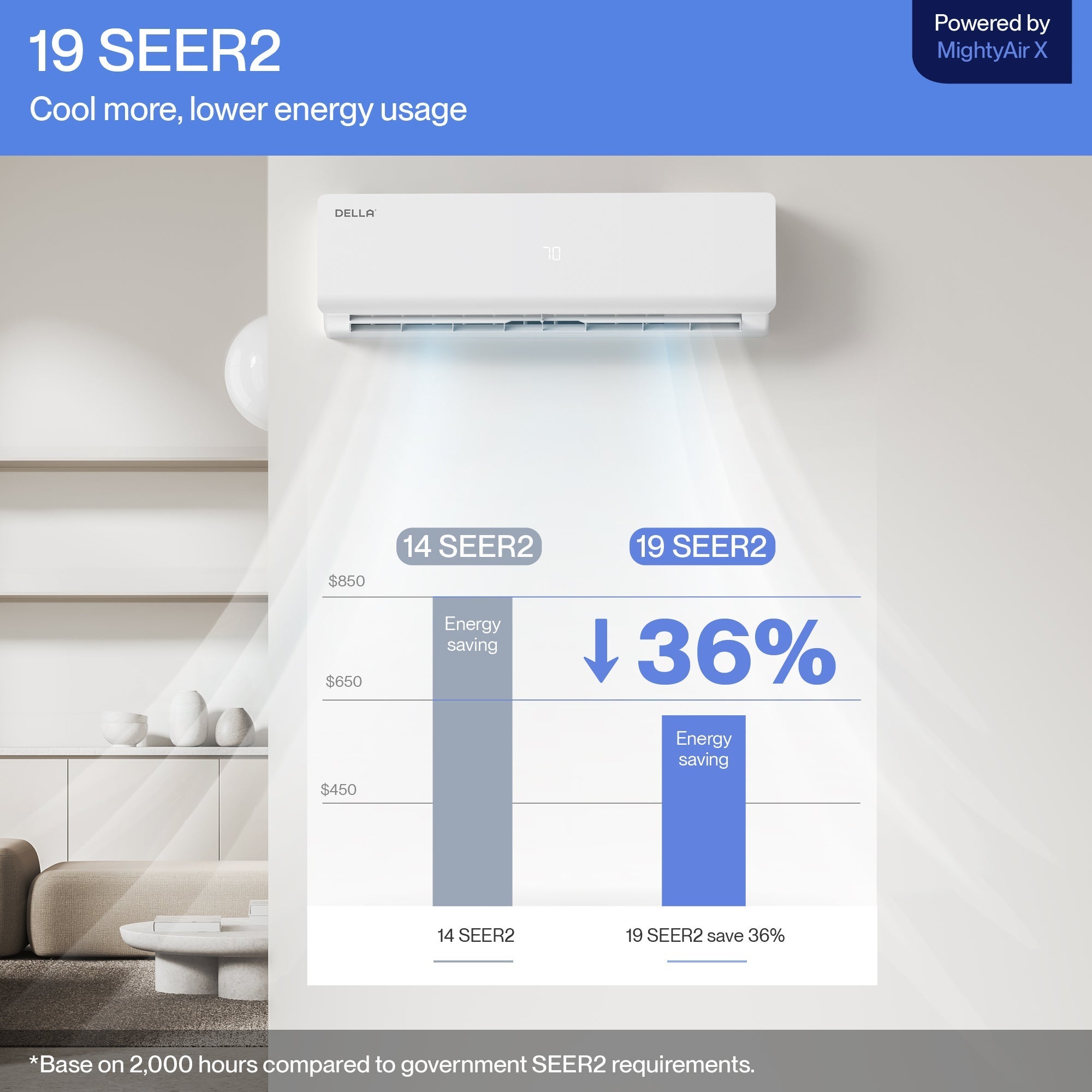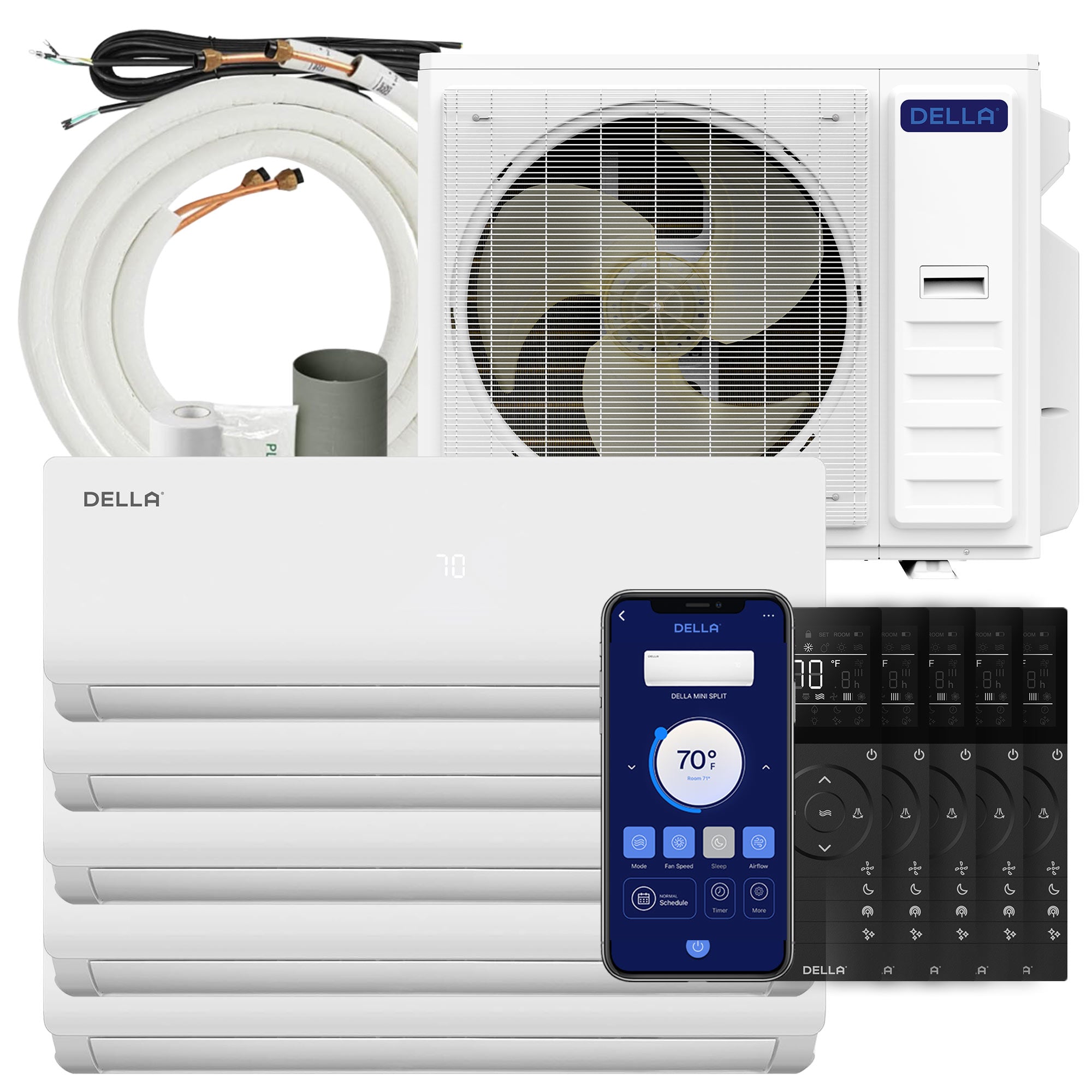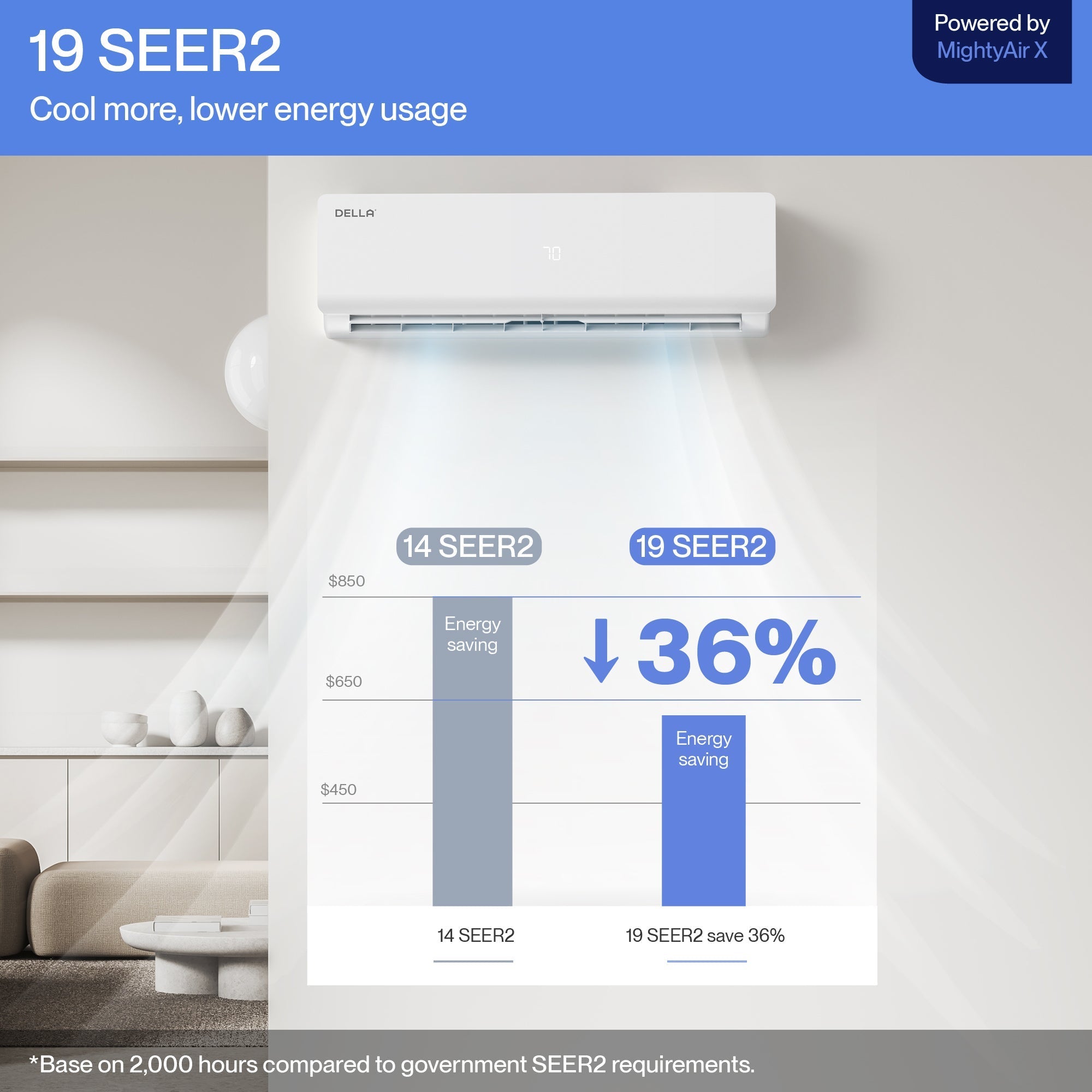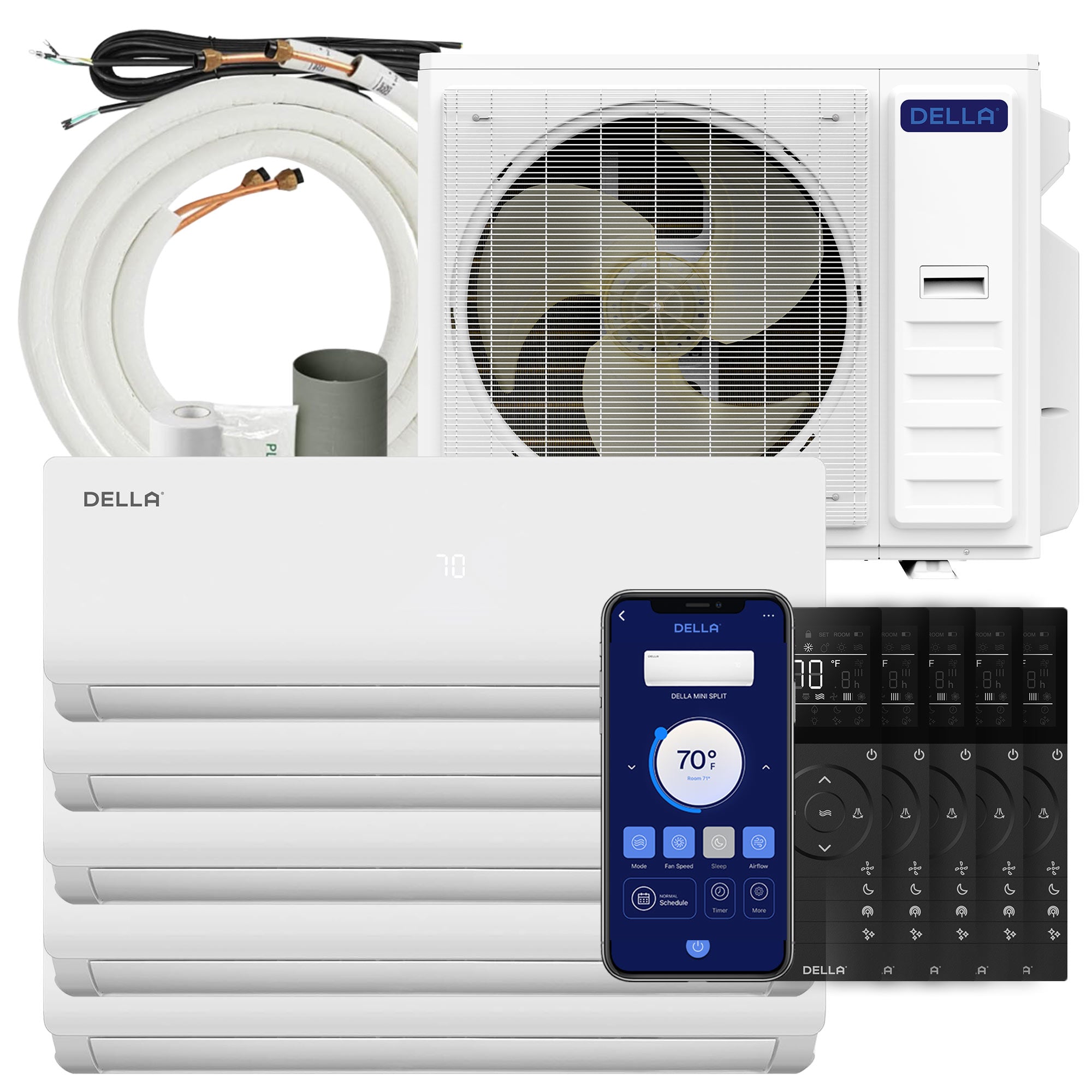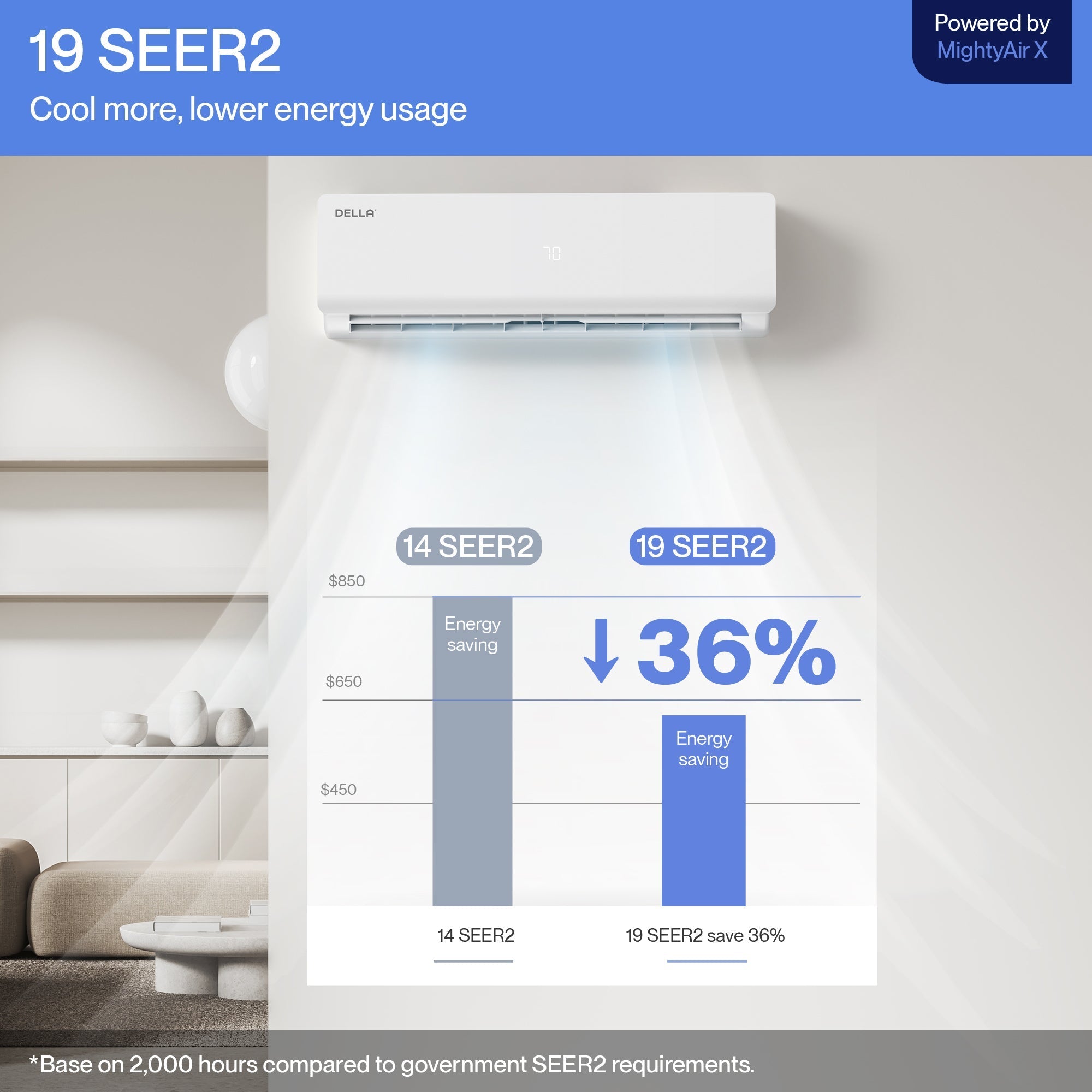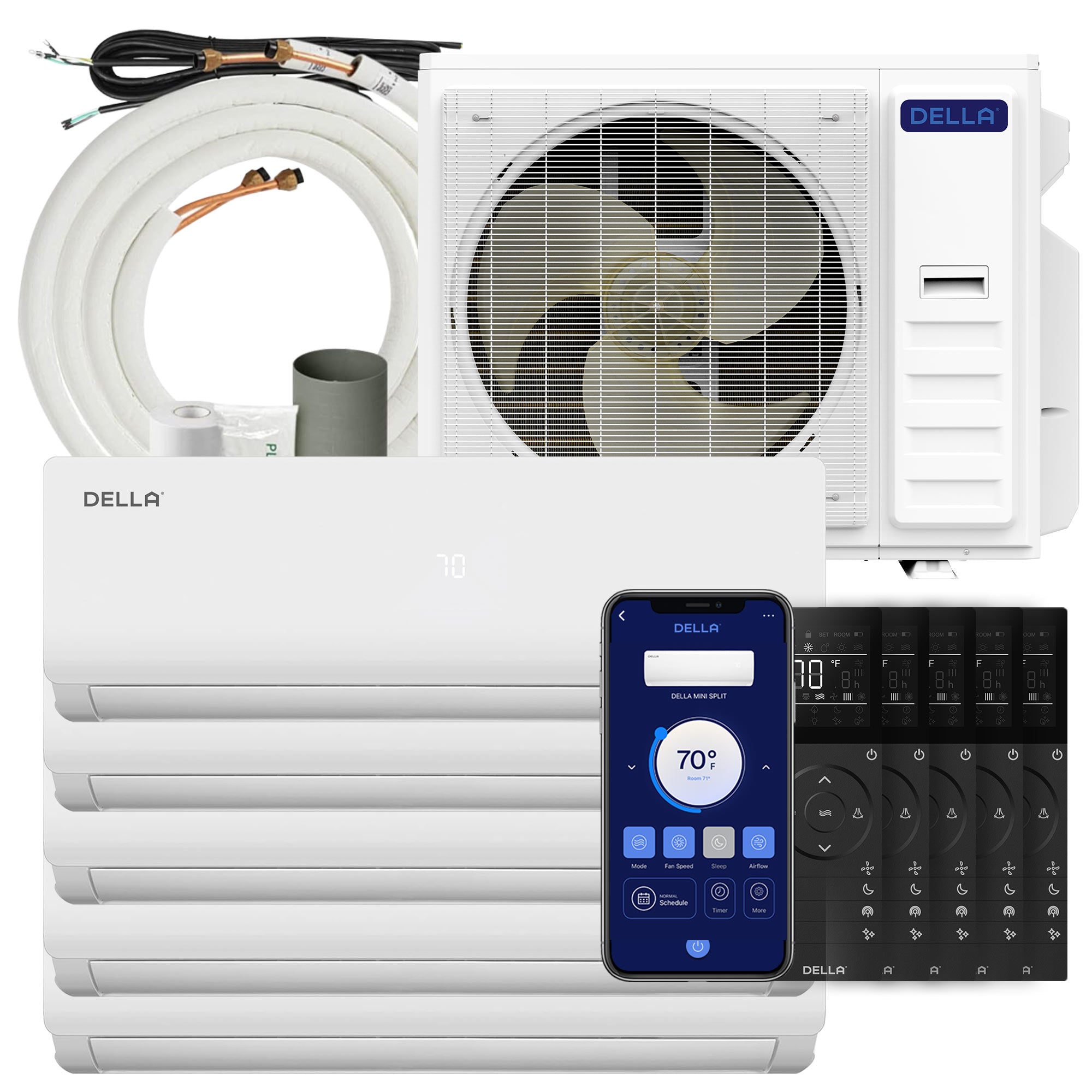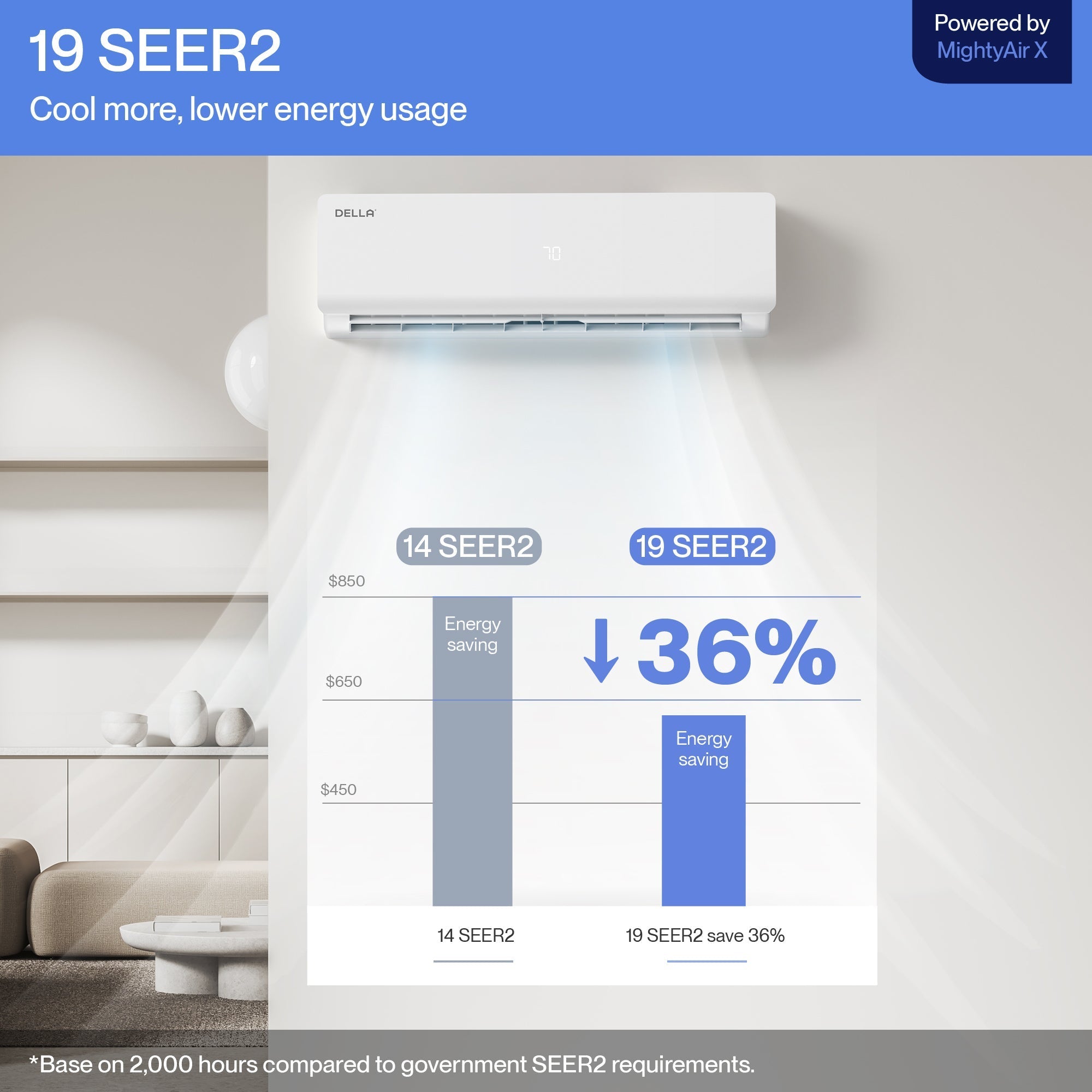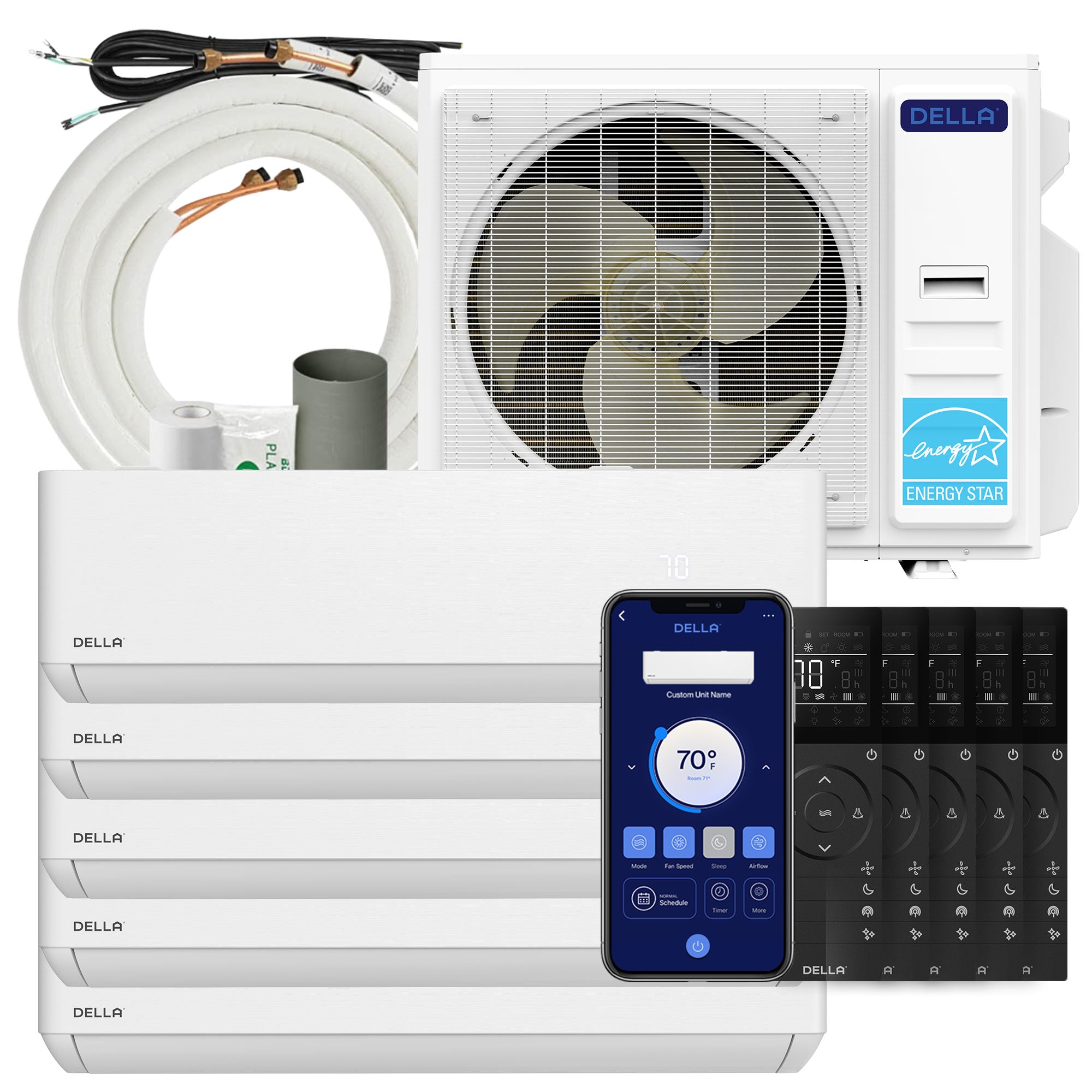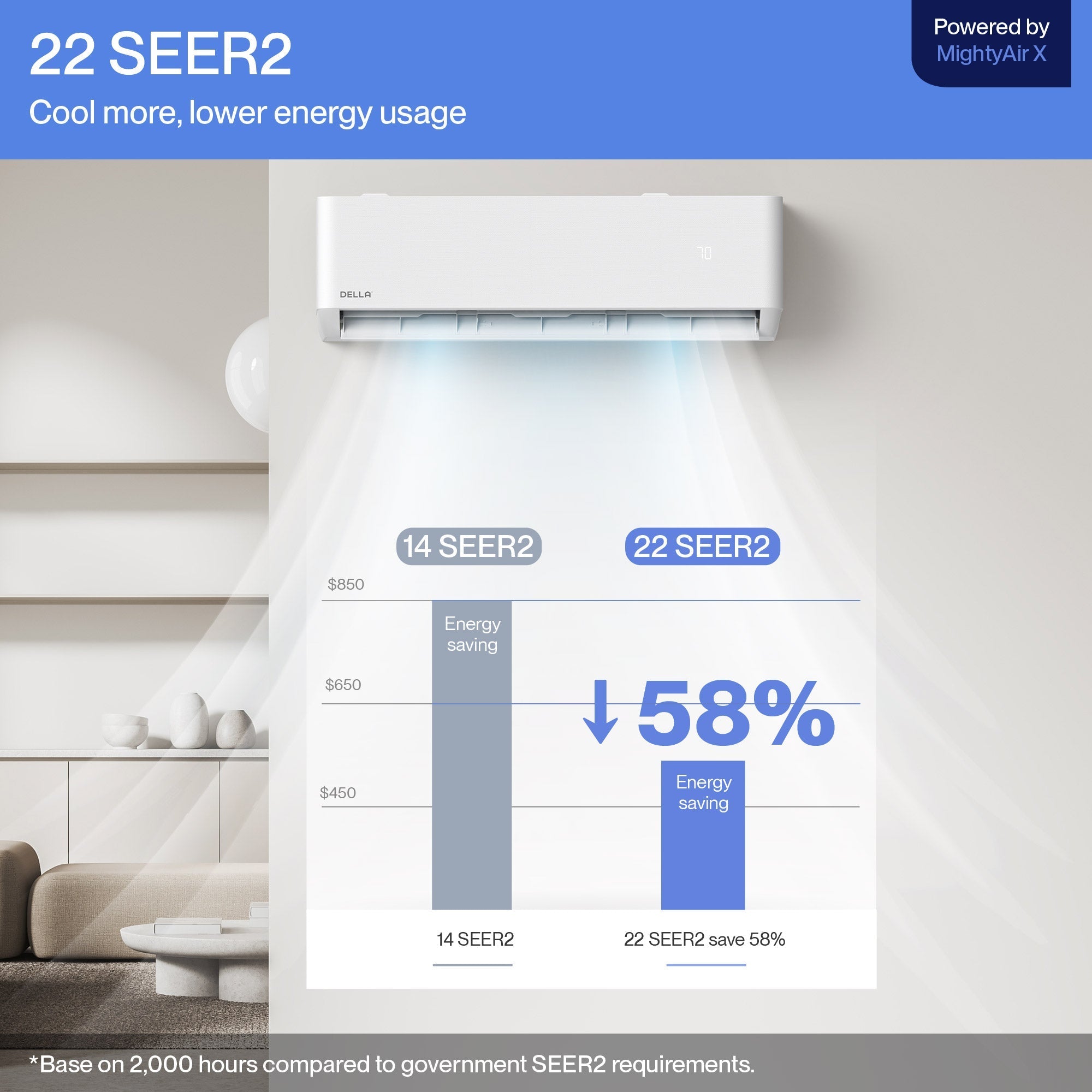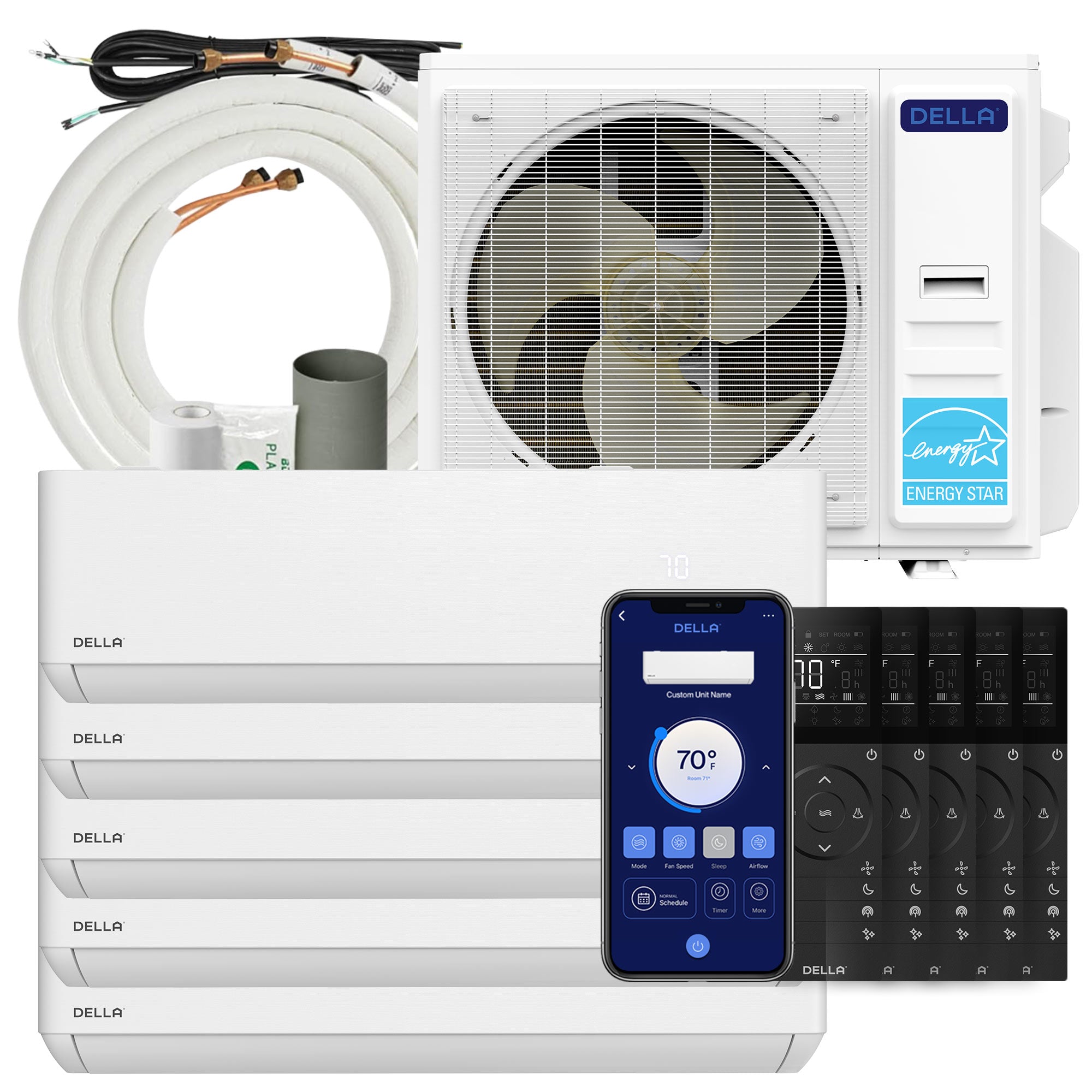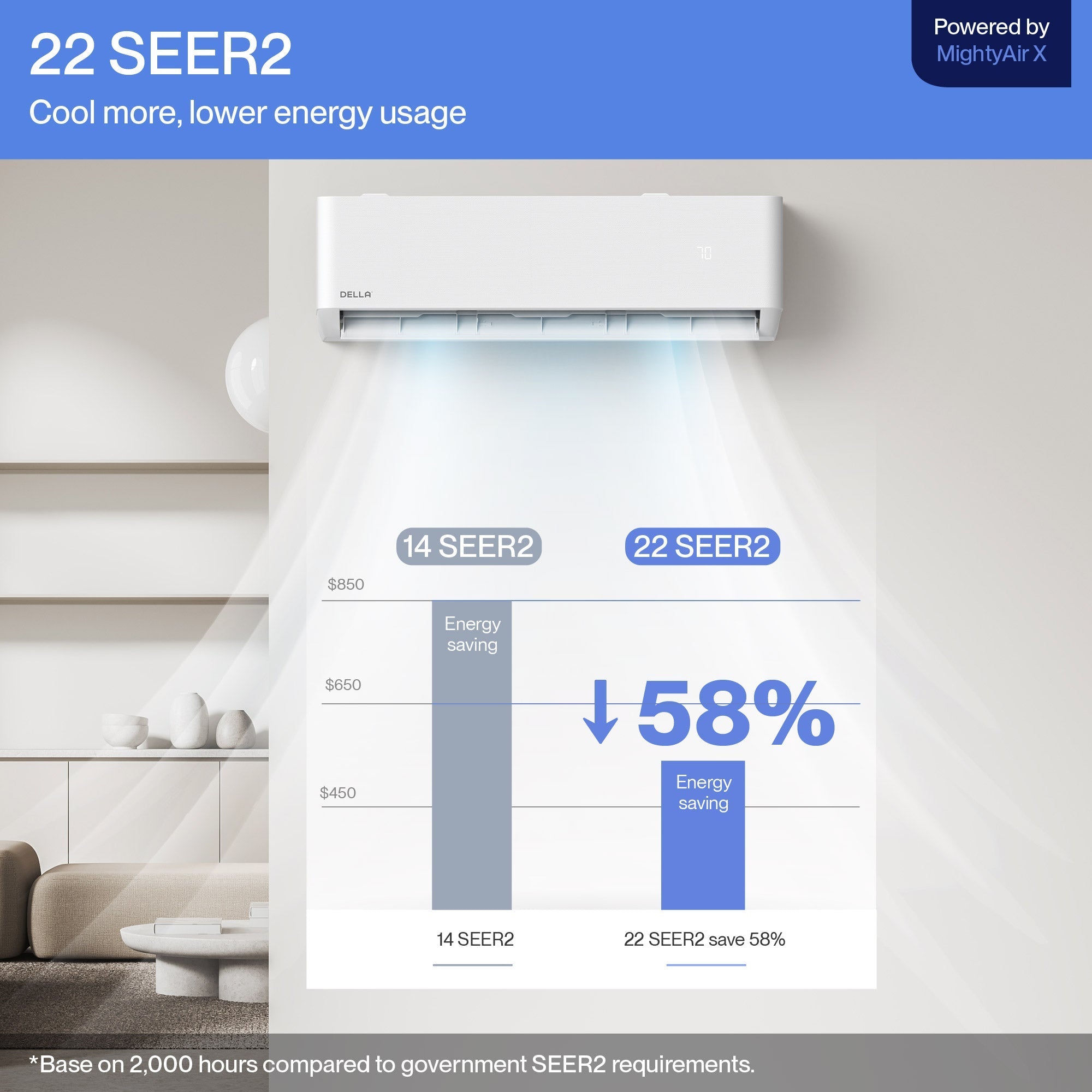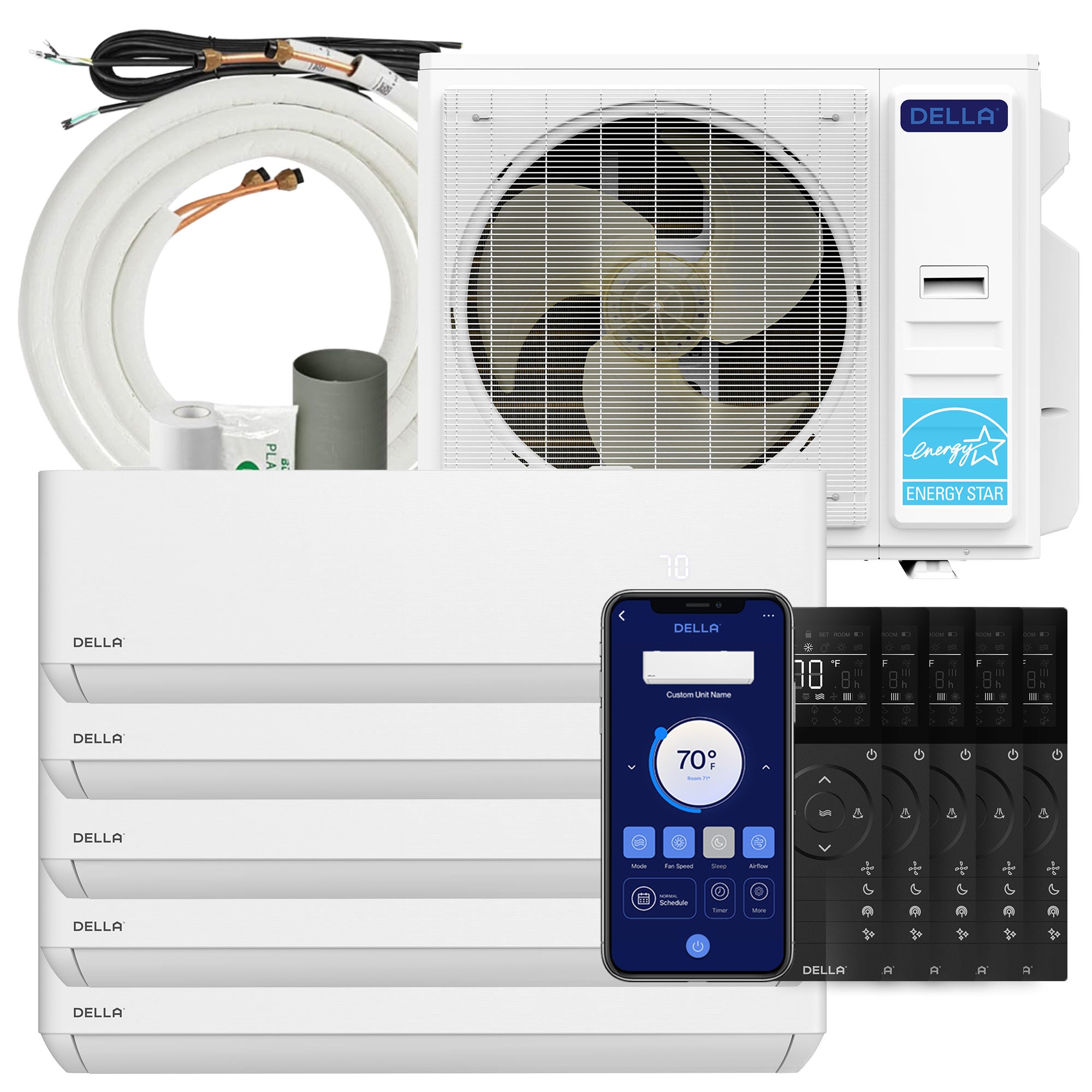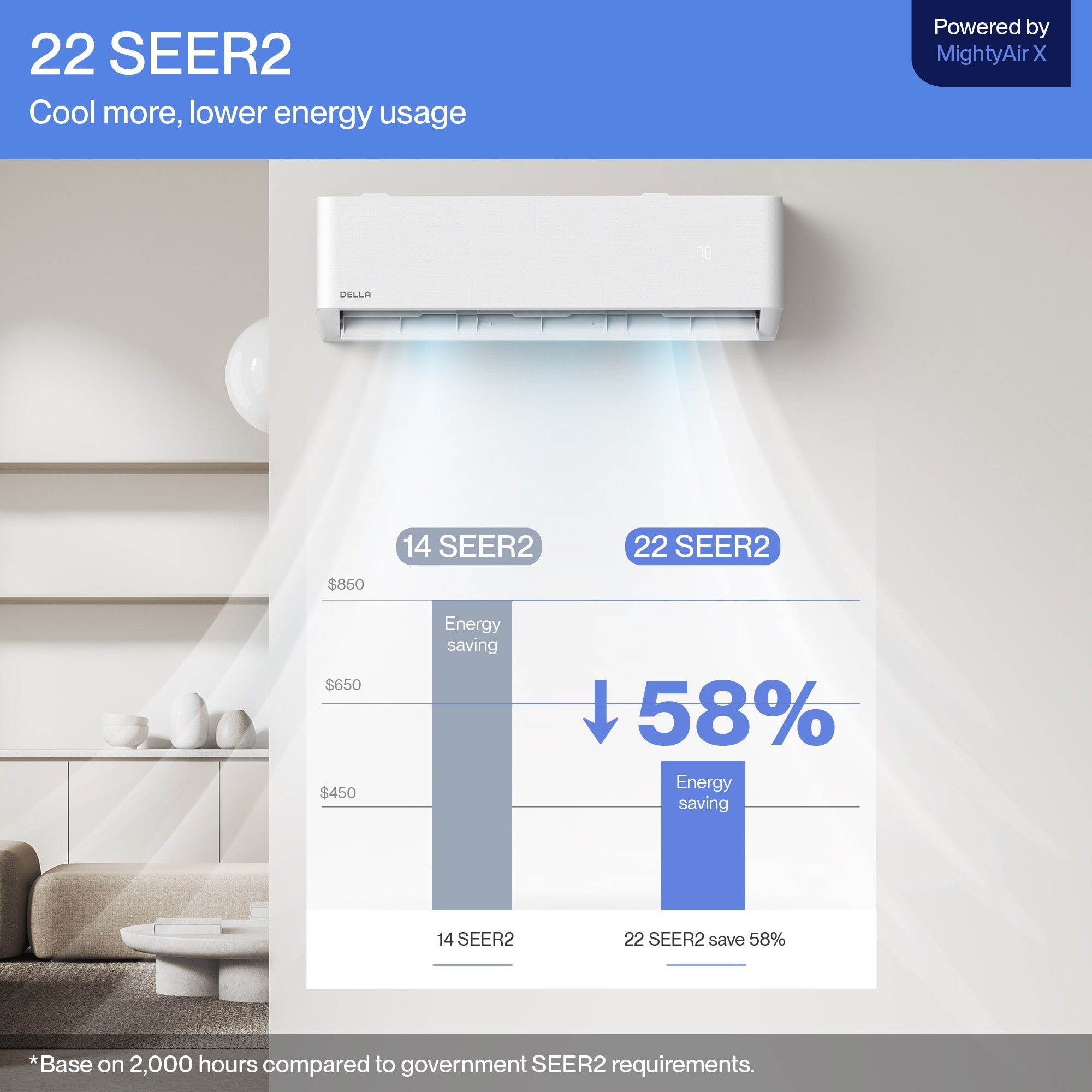FAQs
1. How much power does Della's 5-zone mini split use?
A Della's 5-zone mini split typically uses 4,150W to 6,000W when all indoor units are running simultaneously. Power consumption depends on the BTU rating of each indoor unit, with individual units consuming between 830W to 1,200W for cooling and 770W to 1,100W for heating.
2. How much does it cost to install a 5-zone mini split?
Installing a 5-zone mini split typically costs $8,000 to $20,000, significantly higher than a dual-zone mini split due to increased complexity
Cost Breakdown:
- System Cost: A 5-zone system costs $6,000 to $15,000, depending on brand, BTU capacity, and features.
- Labor Costs: Installation costs range from $2,000 to $5,000, influenced by the complexity of the setup.
- Additional Costs: Electrical upgrades, permits, and accessories may add $500 to $1,000.
3. Can you add mini split heads to the existing system as a 5-zone mini split system?
You can only add heads to a multi-head mini split system if the outdoor unit supports additional zones and has unused refrigerant ports. The system must also have enough BTU capacity to handle the added heads without compromising performance. If your current system doesn't allow for more zones, you would need to upgrade to a larger outdoor unit specifically designed to support a 5-zone setup.
4. What is a five-zone mini split system?
A five-zone mini split heat pumps system connects a single outdoor unit to five indoor air handlers, each serving a separate room or zone. It allows independent temperature control for each area, offering efficient and customizable heating and cooling for larger homes or commercial spaces.
5. How do I choose the right capacity for my five-zone mini split?
To choose the right capacity for a five-zone mini split, follow these steps:
- Calculate Room Sizes: Measure the square footage of each zone (room or area) that the mini split will serve.
- Determine BTU Requirements: Use a guideline of 20 BTUs per square foot to estimate the cooling or heating needs for each zone. For example, a 250 sq. ft. (similar to spaces using an air conditioner for small room) would require about 5,000 BTUs.
- Add Up BTU Needs: Add the BTU requirements for all five-zones to get the total system capacity. For a 5-zone system, the total capacity often ranges between 36,000 to 60,000 BTUs, depending on the size of each zone.
- Consider Climate and Insulation: Adjust for factors like poor insulation, high ceilings, or extreme climate conditions, which may increase the BTU requirements.
- Consult a Professional: Have an HVAC professional verify your calculations and ensure that the selected system is appropriately sized for your home or building.
6. What are the best features and biggest benefits of ductless 5-zone mini split systems?
5-zone mini split systems feature and offer these benefits:
- Independent Zone Control: Adjust temperatures separately in each zone for maximum comfort.
- Energy Efficiency: Heat or cool only the zones in use, reducing energy consumption.
- Quiet Operation: Both indoor and outdoor units operate with minimal noise.
- Flexibility: Ideal for retrofits, additions, or spaces without ductwork.
- Customizable Design: Choose indoor unit types (wall-mounted, ceiling cassette, etc.) to match your needs.
7. What are the most common uses for 5-head mini splits?
Five head mini splits, comparable to 12,000 BTU mini splits in flexibility, are commonly used in:
- Large homes with multiple bedrooms and living areas.
- Offices with separate workspaces requiring individual temperature control.
- Multi-story homes where each floor functions as a separate zone.
- Commercial spaces like retail stores or restaurants with diverse heating and cooling needs.
8.. How to install a 5-head mini split system?
Installing a 5-head mini split AC system involves these steps:
Plan the Installation
Decide the locations for the outdoor unit and the five indoor units. Ensure the placement allows efficient refrigerant line routing and proper airflow.
Mount the Indoor Units
Secure each indoor unit on the wall, ceiling, or floor as needed. Make sure they are level and positioned to distribute air evenly in each zone.
Install the Outdoor Unit
Place the outdoor unit on a stable surface, such as a concrete pad, or mount it securely on an external wall. Ensure it has enough clearance for proper airflow.
Connect Refrigerant Lines and Wiring
Run the refrigerant lines, electrical cables, and drain lines from each indoor unit to the outdoor unit. Bundle and protect the lines with a cover or conduit for durability and aesthetics.
Vacuum the Lines and Charge the System
Use a vacuum pump to remove air and moisture from the refrigerant lines. Charge the system with refrigerant (if needed) as per manufacturer specifications.
Electrical Connections
Connect the system to the power supply, ensuring the circuit can handle the electrical load. Follow local electrical codes and safety guidelines.
Test the System
Turn on the system and test each indoor unit to ensure proper operation. Adjust the settings and verify that each zone cools or heats as expected.
9. What maintenance is required for a five-zone mini split system?
To ensure efficient operation, a five-zone mini split system requires regular maintenance, including the following steps:
Clean the Air Filters
Remove and clean the air filters in each indoor unit every 3 months.
Wash the filters with soapy water and let them air dry before reinserting. Clean more often if the environment is dusty or the air quality is poor.
Use the Self-Cleaning Function
If available, activate the self-clean function on the indoor units every 3 months to reduce internal dust and debris buildup.
Inspect the Outdoor Unit
Regularly check for debris, leaves, or other obstructions around the outdoor unit. Clear away anything that may block airflow.
Check Refrigerant Levels
Have an HVAC technician inspect refrigerant levels every 3-4 years to ensure the system operates efficiently and to prevent potential damage.
Maintain the Drain Lines
Inspect and clear the drain pipes periodically to ensure they are not obstructed, which could lead to water leaks or mold growth.
Seasonal Adjustments
Before heavy usage periods, clean all indoor and outdoor units, check for proper operation, and ensure that airflow is unobstructed.
Long Idle Periods
If the system is unused for an extended period, remove the batteries from the remote controls and disconnect the power supply to protect the system from potential electrical issues.
When restarting, clean the filters, check the drain lines, and inspect the air inlets and outlets for debris.
10. How does a 5-head mini split system work?
A 5-head mini split system connects one outdoor unit to five indoor units via refrigerant lines, electrical wiring, and drain lines. Each indoor unit operates independently with its own thermostat, allowing precise temperature control for each zone. The outdoor compressor uses inverter technology to adjust its output based on the combined demand of all five-zones, ensuring efficient heating or cooling.
Free & Fast Shipping
Same Day Processing
30 Days Money-back
Guarantee
24x7 Live Chat Support
M-F Technical Phone Support
Lifetime Coverage
(Mini Splits)
